
Basic Bezel Wire Tutorial
- Category: Metalwork
- Technique(s): Butane Torch Techniques
- Skill Level: Beginner
We all learn different skills in different ways and apply that knowledge in ways that someone else might not or might not think of. There are no set RULES for making bezels, only what works best for you. So, watch a few videos, read a few books, take notes, and apply the parts learned that will work best in your situation with the tools and supplies you are working with.
Basic plain strip bezel wire is available in a variety of metals, thicknesses, and widths. Wirejewelry.com carries copper bezel wire in 26 gauge as well as 32 gauge. They also carry 28 Gauge 3/16" Fine Silver Bezel Wire in 1, 5, and 10 foot lengths. If you will be making a lot of precious metal bezel-set stone jewelry, longer lengths of bezel wire are usually more cost effective.
Basic plain strip bezel wire is available in a variety of metals, thicknesses, and widths. Wirejewelry.com carries copper bezel wire in 26 gauge as well as 32 gauge. They also carry 28 Gauge 3/16" Fine Silver Bezel Wire in 1, 5, and 10 foot lengths. If you will be making a lot of precious metal bezel-set stone jewelry, longer lengths of bezel wire are usually more cost effective.
Materials

28 Gauge 3/16" Fine Silver Bezel Wire
H9-28BZL
- Lesson Quantity: 1.00 pieces
- Purchase Quantity: 1.00 1FT
- Price: $13.60
- Gold Club Price: $10.20

32 Gauge Copper Bezel Wire - 10FT
H30-11A
- Lesson Quantity: 1.00 pieces
- Purchase Quantity: 1.00 each
- Price: $6.40
- Gold Club Price: $4.80

32 Gauge Red Brass Bezel Wire - 10FT
H30-3A
- Lesson Quantity: 1.00 pieces
- Purchase Quantity: 1.00 each
- Price: $7.70
- Gold Club Price: $5.78

22 Gauge Dead Soft Fine Silver Sheet - 6 Inches
H9-22SM6
- Lesson Quantity: 1.00 pieces
- Purchase Quantity: 1.00 1 Inch
- Price: $64.86
- Gold Club Price: $48.65
Tools

Bezel Roller Deluxe
PSH-776.00
- PSH-776.00
- Lesson Quantity: 1.00 pieces
- Purchase Quantity: 1.00 each
- Price: $3.98
- Gold Club Price: $2.98

Curved Burnisher with Wooden Handle
G8-14
- G8-14
- Lesson Quantity: 1.00 pieces
- Purchase Quantity: 1.00 each
- Price: $3.57
- Gold Club Price: $2.68

WET/DRY PAPER 9 X 11 ASST- 20PC- 2EA GRIT 180-3000
ABR-500.90
- ABR-500.90
- Lesson Quantity: 1.00 pieces
- Purchase Quantity: 1.00 each
- Price: $24.95
- Gold Club Price: $18.71
Instructions
Step 1:
How wide should bezel wire be?
It is helpful to think of a cabochon or stone in terms used to describe a cut gemstone.
The easiest cabochon to bezel set when first starting is one without a lot of angles, corners, and curves. Round and oval cabochons are good. Cabochons can be thick or thin-first photo. They do not always have to be gemstones. Glass pebbles-second photo-can be made into a beautiful piece of jewelry.
These have one thing in common. It is easy to find where the stones start to curve in above the girdle. The bezel should be at least 1mm to 1.5mm higher than that point. The larger the stone, the wider/higher the bezel may need to be to hold it in place. Half a millimeter can make a huge difference in how much of a stone top is covered with a finished bezel as well as how it looks.
The crackle fire agate on the left in the first photo needs a wider bezel than the amazonite cabochon to the right. If the same height bezel wire used on the crackle fire agate was used on the amazonite, it would be very difficult to push the top edge of the bezel in smoothly without kinks or overlaps around the edge. After bezel setting a few stones, you will get a feel for the width of bezel needed for cabochons.
These have one thing in common. It is easy to find where the stones start to curve in above the girdle. The bezel should be at least 1mm to 1.5mm higher than that point. The larger the stone, the wider/higher the bezel may need to be to hold it in place. Half a millimeter can make a huge difference in how much of a stone top is covered with a finished bezel as well as how it looks.
The crackle fire agate on the left in the first photo needs a wider bezel than the amazonite cabochon to the right. If the same height bezel wire used on the crackle fire agate was used on the amazonite, it would be very difficult to push the top edge of the bezel in smoothly without kinks or overlaps around the edge. After bezel setting a few stones, you will get a feel for the width of bezel needed for cabochons.
Since I live by a lake and collect stones to set, I am using a sketch of them to describe where to measure for bezel width. The bezel wire must be wide enough to cover the girdle-the dotted line on the stones-and to cover a bit of the crown-the crown and table by a millimeter or more.
The arrows on the rocks show how high the bezel wire must at least be to capture the stone. In most cases, the height of the girdle around the rock will not be the same. Most of the time this will not be a problem, as in the first rock. If one end of the rock is too thin, it can be raised in the bezel with a small shim of metal soldered to the backplate.
The arrows on the rocks show how high the bezel wire must at least be to capture the stone. In most cases, the height of the girdle around the rock will not be the same. Most of the time this will not be a problem, as in the first rock. If one end of the rock is too thin, it can be raised in the bezel with a small shim of metal soldered to the backplate.
The girdle on both ends of this rock are the same height. Viewing from another angle, the girdles on each side of the rock are much higher than the girdle on either ends. The bezel wire needs to be wider to accommodate the side girdle height, the higher of the two.
With rocks, after the bezel wire is pushed in around the stone, it is not usually a problem if the width of bezel pushed in is uneven around the stone, but some people may find it visually displeasing. When first starting out, try to steer clear of uneven cabochons and stones. If you really want to try your hand at something like uneven height stones, practice with 26 gauge copper bezel wire before working up to silver.
With rocks, after the bezel wire is pushed in around the stone, it is not usually a problem if the width of bezel pushed in is uneven around the stone, but some people may find it visually displeasing. When first starting out, try to steer clear of uneven cabochons and stones. If you really want to try your hand at something like uneven height stones, practice with 26 gauge copper bezel wire before working up to silver.
In most cases, glue is not used when bezel setting cabochons, but stones are another matter. Leveling stones is not new. Stones, nuggets and thin cabochons in early turquoise jewelry were set with cushions of sawdust, ground corncobs, and sometimes cardboard shims, under them which degraded over time. So long as whatever is used to shim or raise a stone is not biodegradable, it is fine to use. E6000 has only been around for a bit over 30 years, so we don't really know. A more stable alts lifespan. An alternative would be two-part epoxy. Most of the time a bit of wire shim soldered to the backplate is all that is needed to level or raise a stone. See Step 15 for a method using wire.






Step 2
Longer lengths can be unwieldly to work with, especially if you like to form bezels around stones on a raised surface such as a bench block. Enter painter's tape.
After purchasing a better painter's tape for painting, I started using my old tape with jewelry. Since one inch was too wide for most of my needs, I used a retractable blade cutter to cut into the roll 5/16" in from one edge all the way around. Since I did not cut all the way to the cardboard roll core, every now and then the cut needs to be made deeper. The narrow strip can be used to "measure" the length of bezel wire needed around the perimeter of a stone.
After purchasing a better painter's tape for painting, I started using my old tape with jewelry. Since one inch was too wide for most of my needs, I used a retractable blade cutter to cut into the roll 5/16" in from one edge all the way around. Since I did not cut all the way to the cardboard roll core, every now and then the cut needs to be made deeper. The narrow strip can be used to "measure" the length of bezel wire needed around the perimeter of a stone.


Step 3
Since 12mm cabochons were not available, 12mm malachite puffed coins make excellent stand-ins for a pair of earrings being made.
Wrap a piece of tape around the outer edge of the stone (either cabochon or bead), overlapping slightly.
Cut the tape several millimeters too long. Folding the tape back and creasing at that point will give you a line to cut on.
Secure the tape to the bezel strip. Cut the bezel wire using the tape length as a guide. An alternative would be to use post-it note strips instead of tape around stones.
Wrap a piece of tape around the outer edge of the stone (either cabochon or bead), overlapping slightly.
Cut the tape several millimeters too long. Folding the tape back and creasing at that point will give you a line to cut on.
Secure the tape to the bezel strip. Cut the bezel wire using the tape length as a guide. An alternative would be to use post-it note strips instead of tape around stones.




Step 4
Bezel wire strips have a "front" and a "back" side. In other words, one side looks different than the other.
When the bezel wire is cut, the cutting blade pressed into the metal, pushing a very small amount of metal to the "back" side of the strip, creating a faint ridge. It was not intentional to photograph a face, but it makes it easy to point out that the top "lip" is the "back" side of the bezel strip and the bottom lip is the "front" side.
It is up to you which side you want to face out, but it is something to be aware of if you are making matching items, like earrings.
When the bezel wire is cut, the cutting blade pressed into the metal, pushing a very small amount of metal to the "back" side of the strip, creating a faint ridge. It was not intentional to photograph a face, but it makes it easy to point out that the top "lip" is the "back" side of the bezel strip and the bottom lip is the "front" side.
It is up to you which side you want to face out, but it is something to be aware of if you are making matching items, like earrings.

Step 5
Since plain bezel wire is much less expensive than decorative bezel wires, I am not worried about cutting a slightly longer piece than needed. This gives me room to square the ends up, and squared ends make for a more perfect join.
This method works well when making multiples of the same thing. Even though I ordered several different calibrated stone cabochons, they were not all the same size or height, just close. It was easiest to measure and make all the bezels fit the largest cabochon.
Once the EXACT length of bezel wire needed for the largest cabochon was determined, a piece of tape that length was secured to my work surface and all the other strips were filed to the same length.
This method works well when making multiples of the same thing. Even though I ordered several different calibrated stone cabochons, they were not all the same size or height, just close. It was easiest to measure and make all the bezels fit the largest cabochon.
Once the EXACT length of bezel wire needed for the largest cabochon was determined, a piece of tape that length was secured to my work surface and all the other strips were filed to the same length.

Step 6
If making multiples such as earrings, it is advisable to mark the back of the stones. If the stones are dark colored, or you don't want to mark them, use a bit of painter's tape to label the back of the stones.

Step 7
Once the bezel wire is cut, square up one end. A miter jig and vise is a perfect tool for this. Place the bezel wire flush against the flat fence (looks like a tooth) and tighten the screws down. File the little bit of bezel wire sticking out of the miter jig flush with the surface of the jig-first photo. Label the squared end with a Sharpie-second photo.
Pro Tip: Before putting the bezel wire coil back in the package, square up the leading end. That way, you are ready to quickly start the next project-third photo.



Step 8
Form the bezel wire around the cabochon. If the cabochon is not round, the seam should be placed in the center of the longest straight side, if possible-See the third photo in Step 3. Overlap the bezel wire around the stone. Use an ultra fine point retractable Sharpie to mark the overlap on the bezel wire-first photo. Remove excess bezel wire in the same manner as Step 7 until the ends meet when wrapped around the cabochon, making for a snug fit-second photo.


Step 9
If a higher profile is desired for a thinner stone, as with the amazonite in Step 1, old hotel room keys can be cut to fit inside the bezel.
If a stone is very thin and fragile, or the jewelry item being made can easily get knocked, like a bracelet, cuff, or ring, the shims should entire bottom of the bezel to protect the stone from breaking.
Whatever is used, it should be a permanent solution, not something that can degrade over time. If the lower profile of the stone is desired, the bezel should be cut down before soldering the ends together.
If a stone is very thin and fragile, or the jewelry item being made can easily get knocked, like a bracelet, cuff, or ring, the shims should entire bottom of the bezel to protect the stone from breaking.
Whatever is used, it should be a permanent solution, not something that can degrade over time. If the lower profile of the stone is desired, the bezel should be cut down before soldering the ends together.
Step 10
How bezel ends are cut and soldered together is personal preference. This is just the way I do it. It is very important to match up both ends of the bezel wire so no light shows through the seam.
Place the bezel on end with the seam facing down and the bezel bottom facing away from you on a soldering surface-here a hard solderite board. Since solder will not show on the inside of the bezel and I don't like to clean up solder on the outside, I place a small amount of hard paste solder along the inside seam-first photo.
What torch to use: The smaller Blazer style torches are fine for smaller bezels. With larger or thicker bezels, more heat is needed so move up to a Handy Flame Butane Torch Head on a butane canister. No matter which is used, be careful to not melt the bezel. If the metal starts to become shiny, you have heated it too much and it is about to melt. Immediately pull the flame away.
Heat around the entire bezel until the solder flows-second photo. Immediately tip the bezel over with a solder pick and heat the seam outside the bezel, pulling the solder though to the outside of the seam-third photo. This should take less than a second. Because the bezel bottom was facing away from you, when the bezel cools in a few minutes, which side you chose originally as the bottom can again be marked
Place the bezel on end with the seam facing down and the bezel bottom facing away from you on a soldering surface-here a hard solderite board. Since solder will not show on the inside of the bezel and I don't like to clean up solder on the outside, I place a small amount of hard paste solder along the inside seam-first photo.
What torch to use: The smaller Blazer style torches are fine for smaller bezels. With larger or thicker bezels, more heat is needed so move up to a Handy Flame Butane Torch Head on a butane canister. No matter which is used, be careful to not melt the bezel. If the metal starts to become shiny, you have heated it too much and it is about to melt. Immediately pull the flame away.
Heat around the entire bezel until the solder flows-second photo. Immediately tip the bezel over with a solder pick and heat the seam outside the bezel, pulling the solder though to the outside of the seam-third photo. This should take less than a second. Because the bezel bottom was facing away from you, when the bezel cools in a few minutes, which side you chose originally as the bottom can again be marked



Step 11
On a bench block, reshape the bezel around the cabochon. Half a clothespin works very well to slide around the bezel without pushing the top edge in.

Step 12
Use a Sharpie to cover the bottom of the bezel-first photo. I happen to like red because it is very visible in areas needing more sanding during the process.
Place 400 grit sandpaper on a bench block. Place the bezel bottom side down on the sandpaper. Cover the bezel with your fingers. Run the bezel across the sandpaper in a figure 8 motion, turning the bezel several times during the process so one side is not sanded more than another, until the Sharpie has been removed from the bottom edge of the bezel-second photo. It will now be flat. Reshape the bezel if needed.
Place 400 grit sandpaper on a bench block. Place the bezel bottom side down on the sandpaper. Cover the bezel with your fingers. Run the bezel across the sandpaper in a figure 8 motion, turning the bezel several times during the process so one side is not sanded more than another, until the Sharpie has been removed from the bottom edge of the bezel-second photo. It will now be flat. Reshape the bezel if needed.


Step 13
It has become habit for me to use painter's tape on the back of cabochons. For all stones that are not round, once the bezels are reshaped I mark an arrow on painters tape on the back of the stone pointing to the bezel seam so it will be easy to set the stone in the bezel later.

Step 14
Decide on the size of backplate needed for the project and cut it out-first photo and second photos. Do you want to see the stone from the back? Now is the time to cut the hole/design-second and third photos.
Flatten the backplate on a bench block using a rubber/nylon or rawhide mallet.
Clean the backplate. When metals are dirty, solder joins can fail. This does not often happen, but why chance it. Sanding with a fine sanding pad and cleaning off with an alcohol soaked pad is usually all that is needed to clean the backplate to ready it for a good solder join-fourth photo.
Flatten the backplate on a bench block using a rubber/nylon or rawhide mallet.
Clean the backplate. When metals are dirty, solder joins can fail. This does not often happen, but why chance it. Sanding with a fine sanding pad and cleaning off with an alcohol soaked pad is usually all that is needed to clean the backplate to ready it for a good solder join-fourth photo.




Step 15
Since hard paste solder was used to secure the bezel ends together, medium paste solder should be used. Remember, start with the solder with the highest temperature flow point and work down with each succeeding solder join.
Place medium paste solder around the bottom of the bezel, or inside at the bottom of the bezel. Since a twisted decorative wire was added to the bezel shown, placing the solder on the bottom of the bezel also secured the twisted wire to the backplate.
After placing the bezel (and other decorative elements) in place on the backplate, place the unit on a raised wire screen so heat can get under it to help the solder flow-third photo.
The backplate is the largest element, with the twisted wire coming in second. Concentrating the heat around the bezel will result in the bezel melting. Always heat up the element/elements with the most mass before ever going to anything smaller or thinner.
Heat around the outside of the backplate and occasionally over the bezel and decorative elements until the solder flows.
Place medium paste solder around the bottom of the bezel, or inside at the bottom of the bezel. Since a twisted decorative wire was added to the bezel shown, placing the solder on the bottom of the bezel also secured the twisted wire to the backplate.
After placing the bezel (and other decorative elements) in place on the backplate, place the unit on a raised wire screen so heat can get under it to help the solder flow-third photo.
The backplate is the largest element, with the twisted wire coming in second. Concentrating the heat around the bezel will result in the bezel melting. Always heat up the element/elements with the most mass before ever going to anything smaller or thinner.
Heat around the outside of the backplate and occasionally over the bezel and decorative elements until the solder flows.
Pro Tip: If a stone must be raised because it is too thin, metal pieces that raise it to the desired height can be soldered onto the backplate inside the bezel. Just make sure they do not touch the bezel wall as that can make it more difficult for the solder to flow-second and third photos.




Step 16
Pickle, rinse, and dry the piece.
Step 17
When making multiples, scratching the number corresponding to the bead/cabochon number in the bottom of the bezel is helpful.

Step 18
Flatten the top edge of the bezel in the same manner as Step 12.

Step 19
Trim, file, and refine the edge of the bezel. It can be helpful to draw a cutting line with an ultra fine point retractable Sharpie marker.
This bezel was used in the cuff shown. It was soldered to a brass backplate using easy paste solder. Cutting the holes in the backplates was a cost saving measure because I wanted the discs for another project. The finished brass section was riveted in place on a cuff base.
This bezel was used in the cuff shown. It was soldered to a brass backplate using easy paste solder. Cutting the holes in the backplates was a cost saving measure because I wanted the discs for another project. The finished brass section was riveted in place on a cuff base.



Step 20:
Setting the stone
If using shims that are not attached to the backplate, place them in the bottom of the bezel. Place the cabochon on top and push down to seat the cabochon inside the bezel.
Step 21
If a metal bezel pusher/roller/burnisher slips, it can scratch the metal and/or cabochon. Wood does not scratch in that manner. Photos below show a favorite bezel pusher of mine-half a wooden clothespin-in use




Step 22
Carefully use your desired tool to push the bezel in over the cabochon. The following photos show a bezel roller in action.
If using a bezel roller, make sure that the rounded edge is facing down if you have not altered the roller to make both top and bottom edges smooth and round. The square edge side can definitely scratch the surface of the stone/cabochon but the rounded edge poses less of a risk. If concerned, covering the stone/cabochon with painter's tape can help with that worry, but it is not fool-proof. Whatever tool is used, the steps are the same. Just be slow and methodical. That way you will have less of a chance to scratching the surface of the stone.
Think of the bezel as a clock. Starting at 6 o'clock, gently push the top of the bezel wire toward the cabochon, rocking the bezel roller back and forth to push about ¼" of the bezel in. Move to 12 o'clock and do the same thing to the bezel there. Here, it would be difficult to get into that small space. The pointed wooden dowel seen in Step 21 was used there.
If using a bezel roller, make sure that the rounded edge is facing down if you have not altered the roller to make both top and bottom edges smooth and round. The square edge side can definitely scratch the surface of the stone/cabochon but the rounded edge poses less of a risk. If concerned, covering the stone/cabochon with painter's tape can help with that worry, but it is not fool-proof. Whatever tool is used, the steps are the same. Just be slow and methodical. That way you will have less of a chance to scratching the surface of the stone.
Think of the bezel as a clock. Starting at 6 o'clock, gently push the top of the bezel wire toward the cabochon, rocking the bezel roller back and forth to push about ¼" of the bezel in. Move to 12 o'clock and do the same thing to the bezel there. Here, it would be difficult to get into that small space. The pointed wooden dowel seen in Step 21 was used there.

Step 23
Just as in Step 22, work opposite sides of the bezel. Starting at 9 o'clock, gently push the top of the bezel wire toward the cabochon, rocking the bezel roller back and forth to push about ¼" of the bezel in. Do the same thing at 3 o'clock.


Step 24
Four quadrants have been created. Starting in the center of one quadrant, gently push the top of the bezel wire toward the cabochon, rocking the bezel roller back and forth to push about ¼" of the bezel in. Because the opposite side is under the leaf, the tip of a stiff narrow short blade knife was used to push the bezel down.



Step 25
Repeat Step 24 in the other quadrants.

Step 26
Use the bezel roller to continue to push the bezel wire in until no more gaps are left.
Step 27
A bezel burnisher can be used to smooth and shine the top edge of the bezel after it has been pushed in. Shown is the one I use, but because there are many different types and sizes of burnishers as well as ways to hold them, it is a good idea to watch a few videos featuring the type of burnisher you may have.

Step 28
Basic bezel wire does not have to be used just as bezels for stones. Try your hand at weaving some pieces together and then texturing the piece. There are so many designs this could be used in!










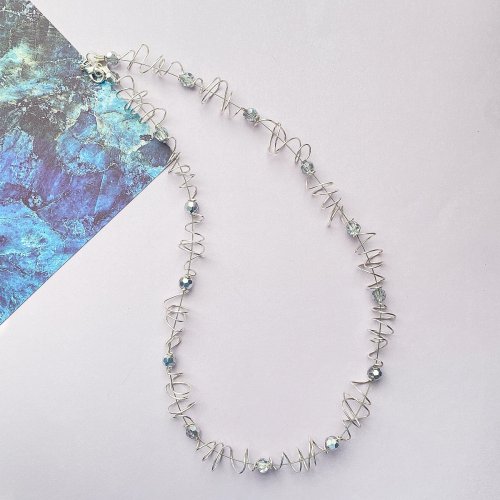
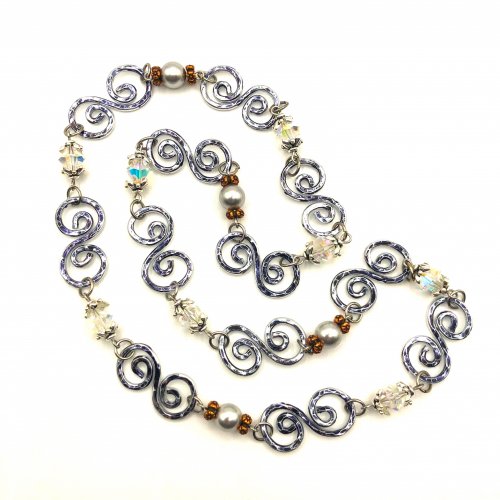
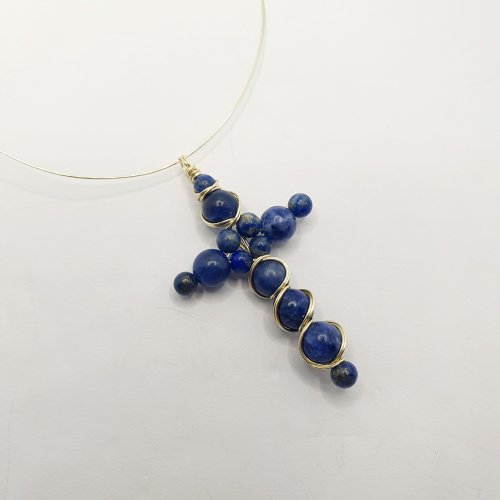

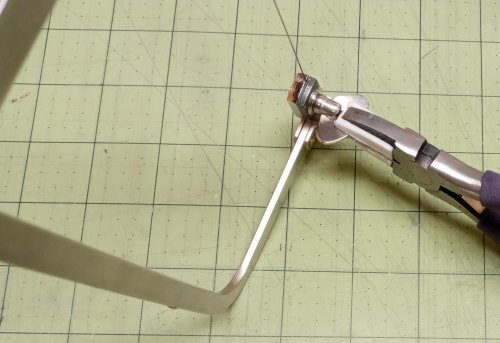


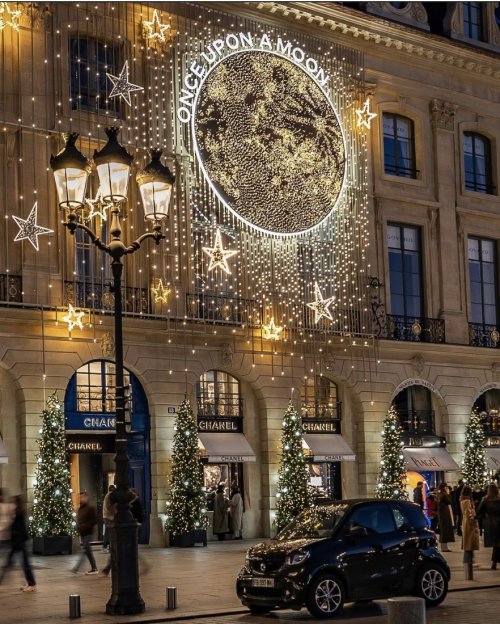

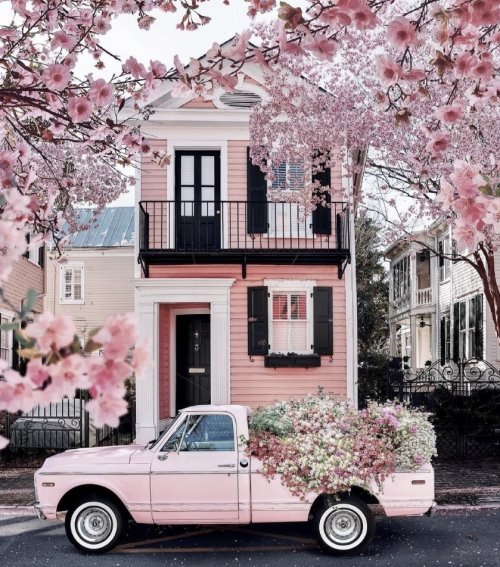

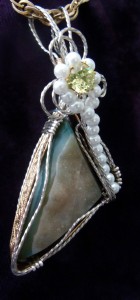

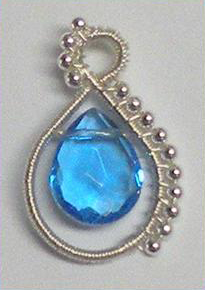 Beaded Briolette Pendant
Beaded Briolette Pendant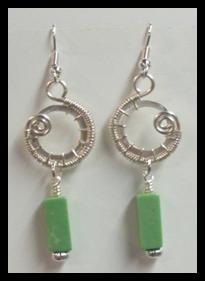 Snail Trail Spiral Earrings
Snail Trail Spiral Earrings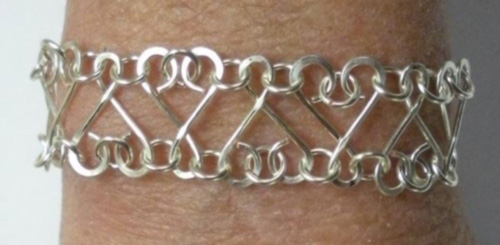 Heart Link Bracelet and Earrings
Heart Link Bracelet and Earrings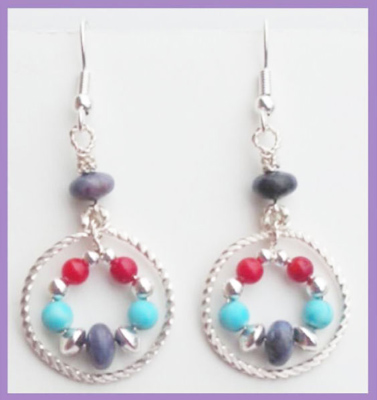 Crazy Hoop Earrings
Crazy Hoop Earrings Double Delight Jade Bracelet
Double Delight Jade Bracelet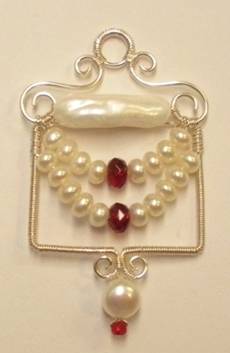 Swagged Pearl Pendant
Swagged Pearl Pendant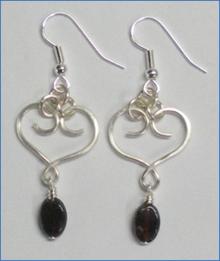 Heart Earrings with Drops
Heart Earrings with Drops Scarab Bracelet
Scarab Bracelet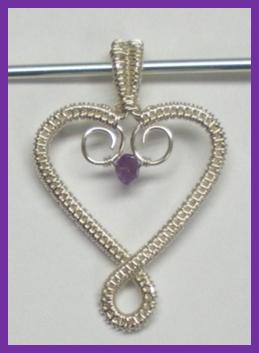 Birthstone Heart Pendant
Birthstone Heart Pendant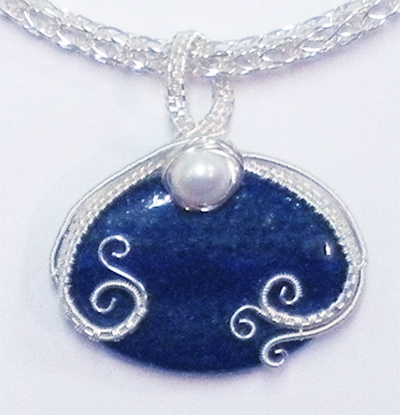 Pearl of the Sea Woven Pendant
Pearl of the Sea Woven Pendant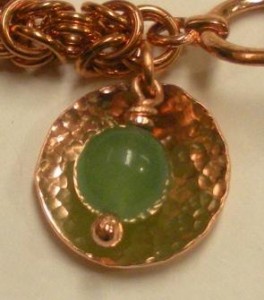 Bead Charm
Bead Charm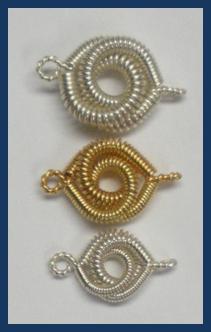 Coiled Rosette Link
Coiled Rosette Link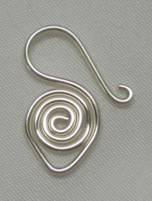 Wire Jewelry Component and Swan Hook
Wire Jewelry Component and Swan Hook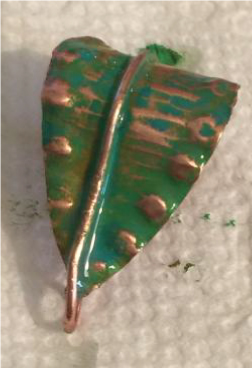 Leaf Bail
Leaf Bail 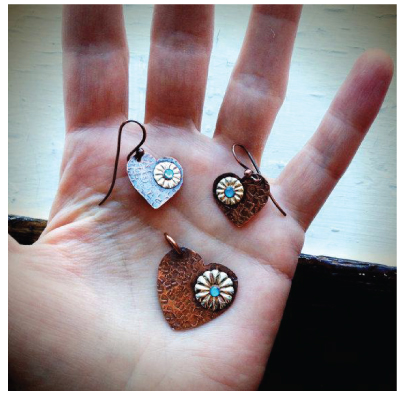 Component Templates with Heart Earrings and Pendant
Component Templates with Heart Earrings and Pendant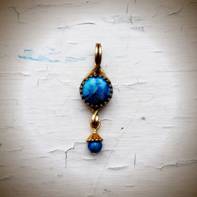 Ring Pendant
Ring Pendant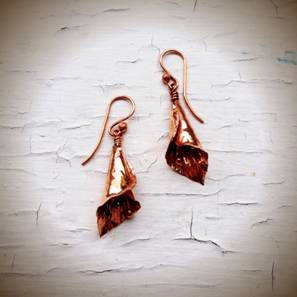 Calla Lily Earrings
Calla Lily Earrings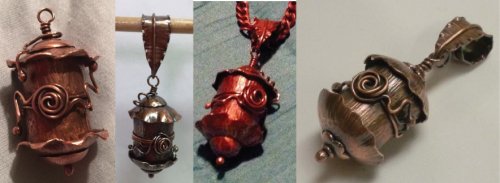 Birdhouse Pendant
Birdhouse Pendant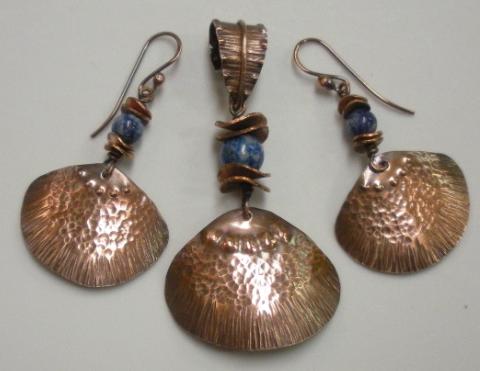 Clamshell Earrings and Pendant
Clamshell Earrings and Pendant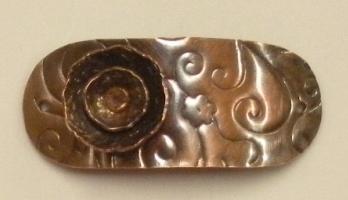 Bracelet Component
Bracelet Component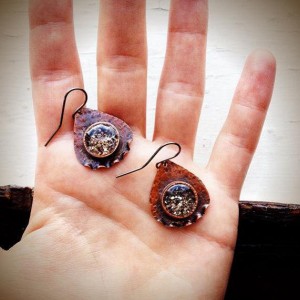 Teardrop Earrings and Pendant
Teardrop Earrings and Pendant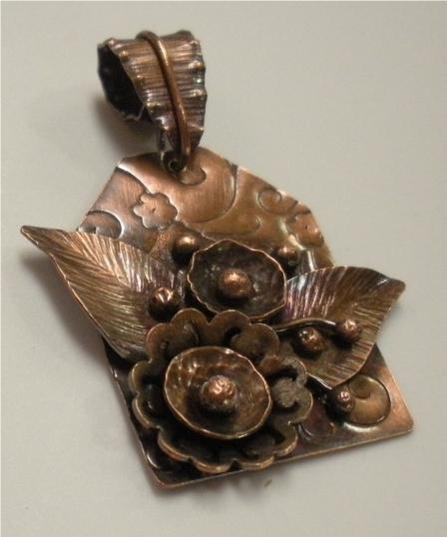 Tab Style Pendant
Tab Style Pendant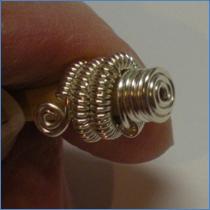 Coiled End Caps
Coiled End Caps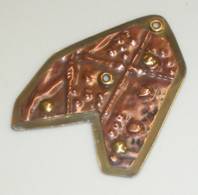 Freeform Pendant
Freeform Pendant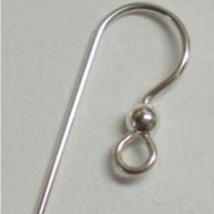 French Hook Ear Wires
French Hook Ear Wires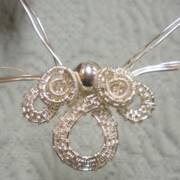 Necklace Component
Necklace Component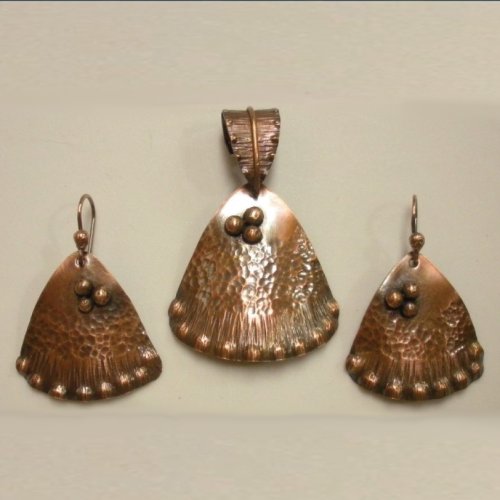 Triangle Shield Earrings, Pendant and Bail
Triangle Shield Earrings, Pendant and Bail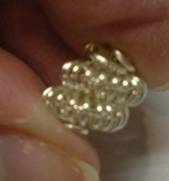 How to Make a Wire Coil and Bead
How to Make a Wire Coil and Bead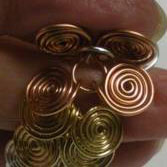 Egyptian Coil Bracelet
Egyptian Coil Bracelet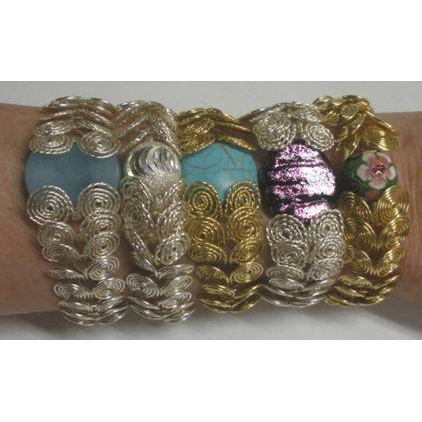 Focal Bead Egyptian Coiled Bracelet
Focal Bead Egyptian Coiled Bracelet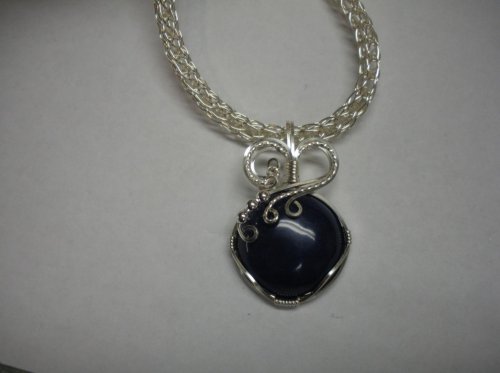 Sweetheart Round Cabochon Pendant
Sweetheart Round Cabochon Pendant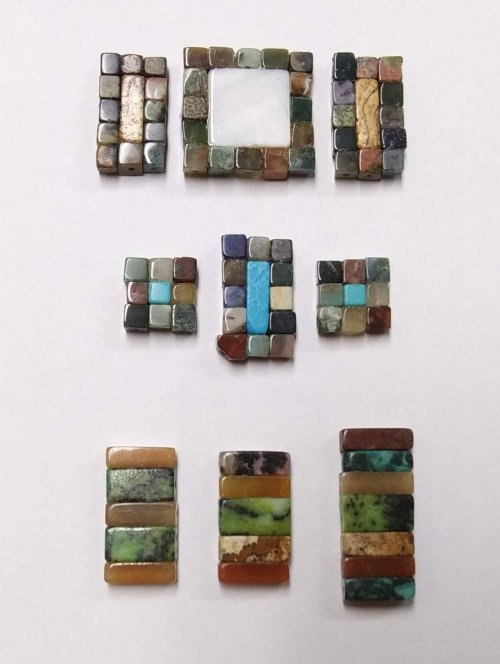 Making Cobblestone Cabochons
Making Cobblestone Cabochons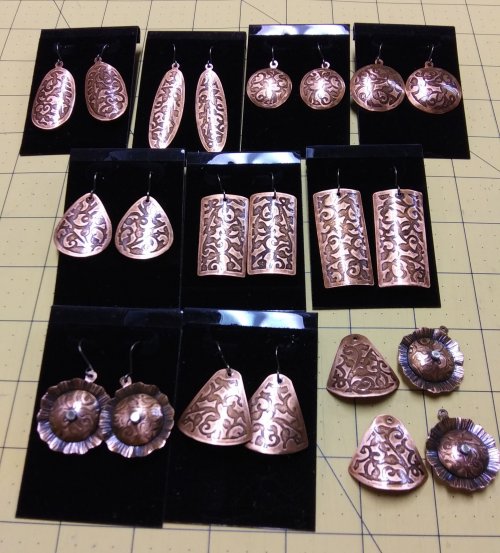 Cupcake Wrapper Earrings
Cupcake Wrapper Earrings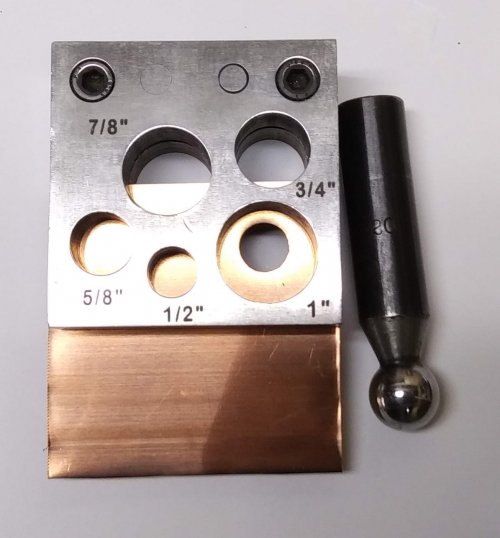 How to Make Metal Washers
How to Make Metal Washers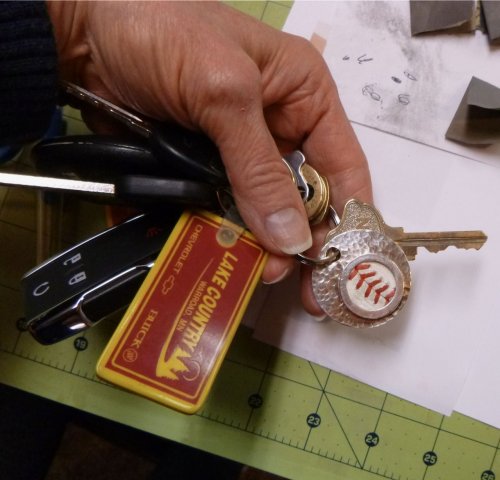 Baseball Skin Keychain
Baseball Skin Keychain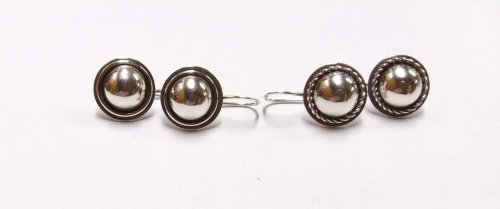 Pat's Silver Domed Earrings
Pat's Silver Domed Earrings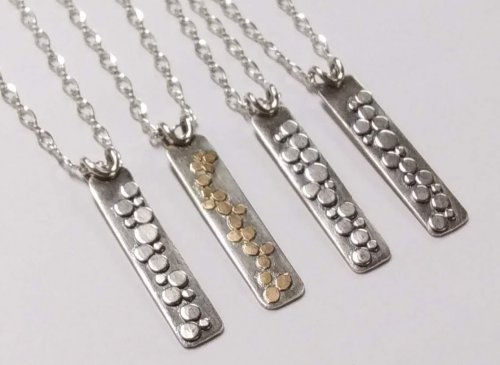 Blaze Your Own Path Pendant
Blaze Your Own Path Pendant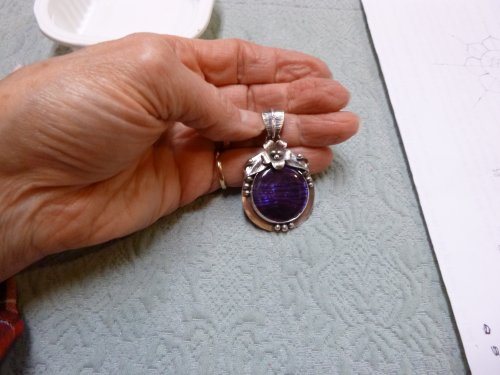 Semi Snap-on Bail
Semi Snap-on Bail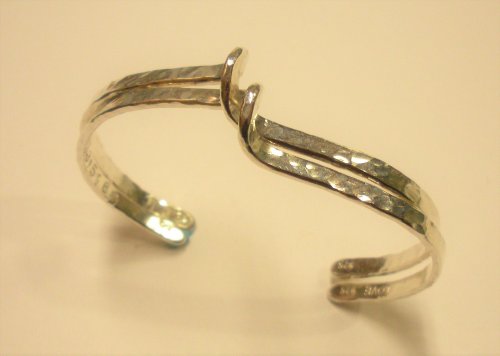 Interlocking Faux Twist Wire Bracelet
Interlocking Faux Twist Wire Bracelet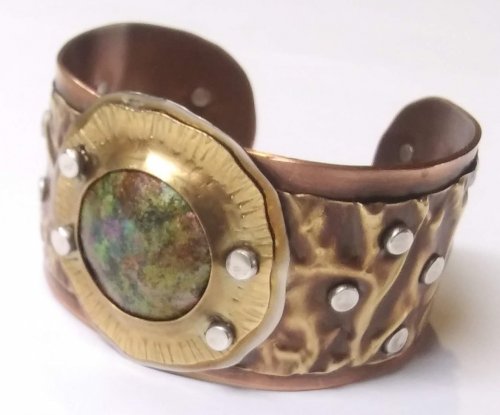 Fold Formed Cuff With Faux Roman Glass or Coin Cabochon
Fold Formed Cuff With Faux Roman Glass or Coin Cabochon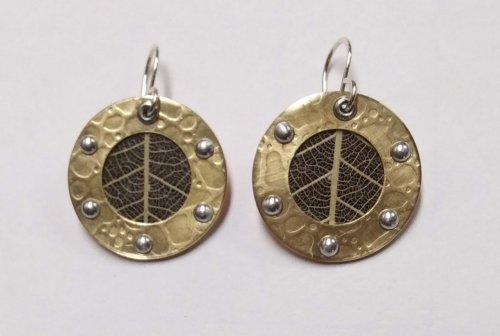 Steampunk Style Leaf Earrings
Steampunk Style Leaf Earrings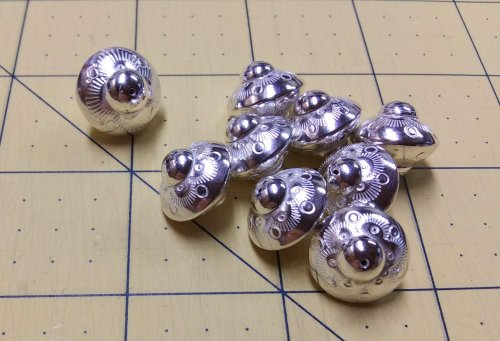 Stamped Saucer Beads
Stamped Saucer Beads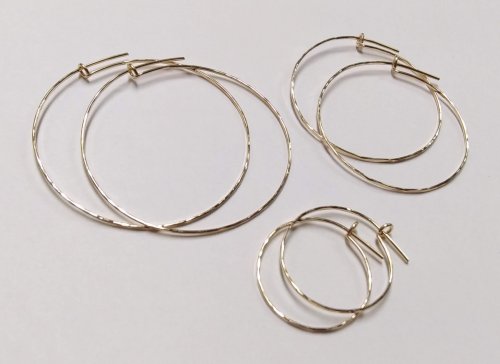 Kat's Wire Hoop Earrings
Kat's Wire Hoop Earrings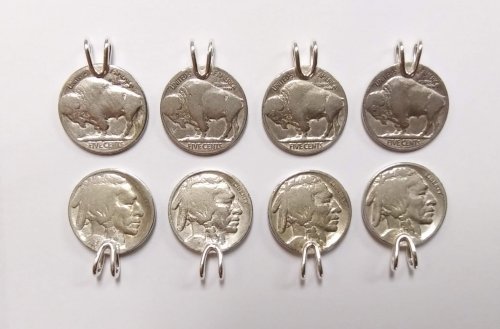 Simple Bail on a Coin Pendant
Simple Bail on a Coin Pendant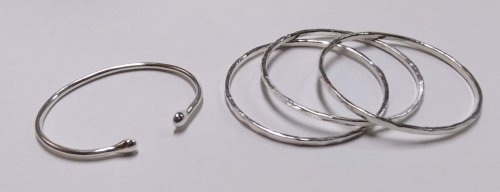 Wire Bangles
Wire Bangles Rolling Mill - or not - Cuff Bracelet
Rolling Mill - or not - Cuff Bracelet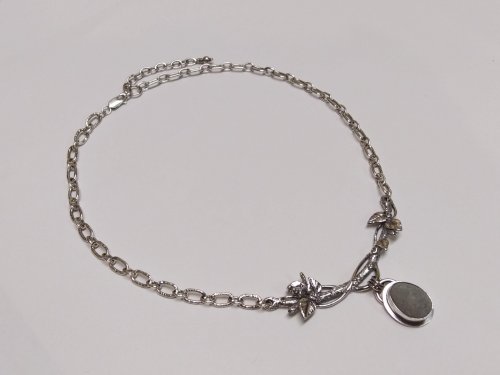 Jen's Chain
Jen's Chain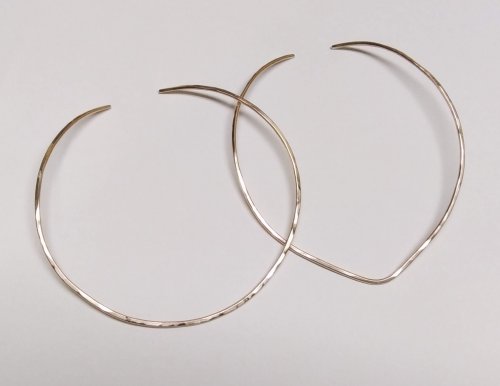 Making Neckwires
Making Neckwires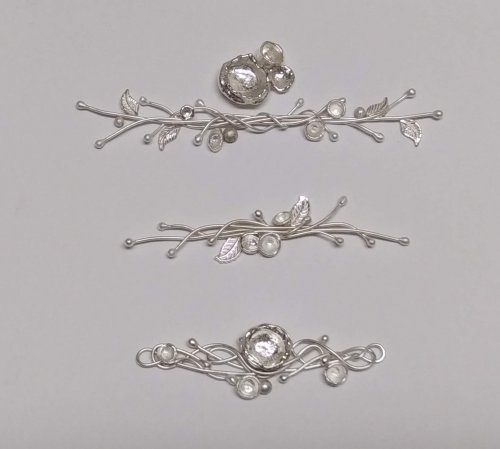 Silver Scrap Wire Focals to Embellish
Silver Scrap Wire Focals to Embellish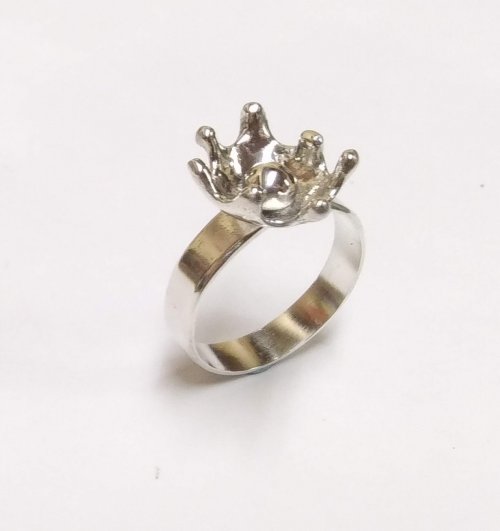 Splash Ring
Splash Ring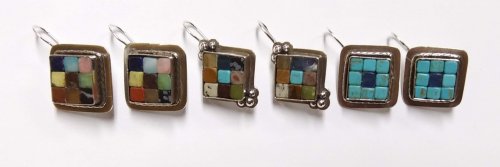 Cobblestone Cab Earrings
Cobblestone Cab Earrings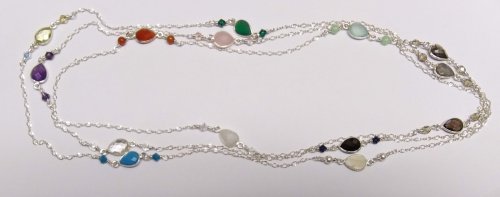 Multi Gemstone Necklace
Multi Gemstone Necklace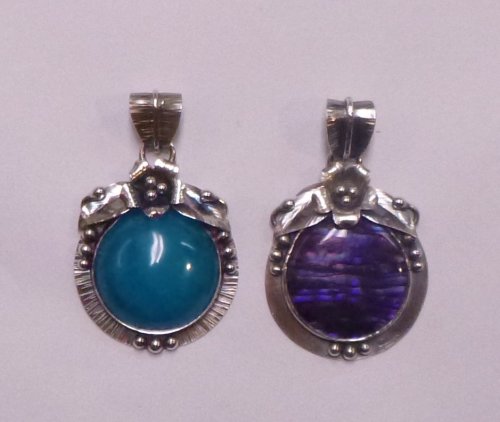 Southwest Style Pendant
Southwest Style Pendant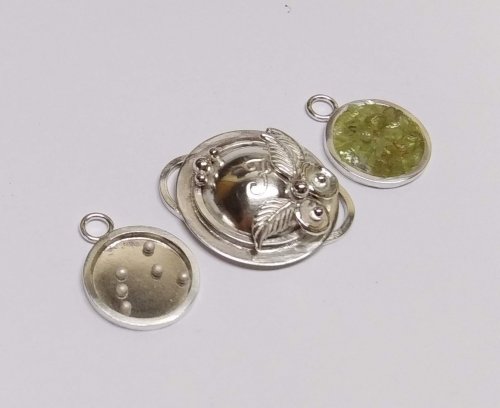 Bezels Using Square Wire
Bezels Using Square Wire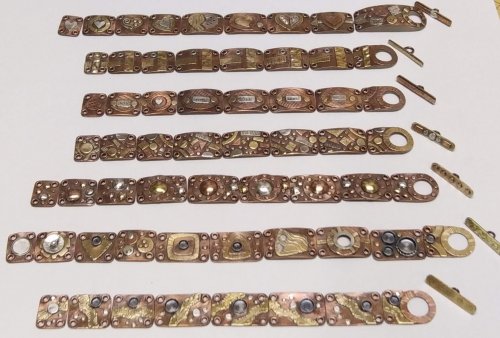 Mixed Metal Sampler Bracelet 1
Mixed Metal Sampler Bracelet 1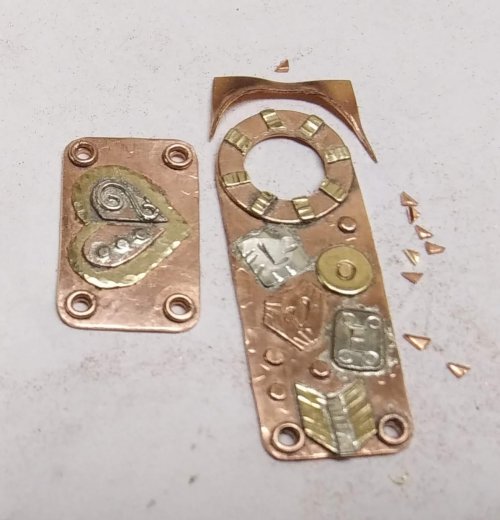 Mixed Metal Sampler Bracelet 2
Mixed Metal Sampler Bracelet 2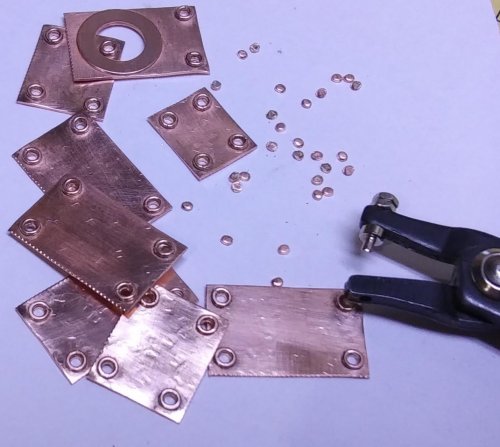 Mixed Metal Sampler Bracelet 3
Mixed Metal Sampler Bracelet 3 Mixed Metal Sampler Bracelet 4 - Words Matter
Mixed Metal Sampler Bracelet 4 - Words Matter Mixed Metal Sampler Bracelet 5 - River Walk
Mixed Metal Sampler Bracelet 5 - River Walk  Mixed Metal Sampler Bracelet 6 - A Little Bling
Mixed Metal Sampler Bracelet 6 - A Little Bling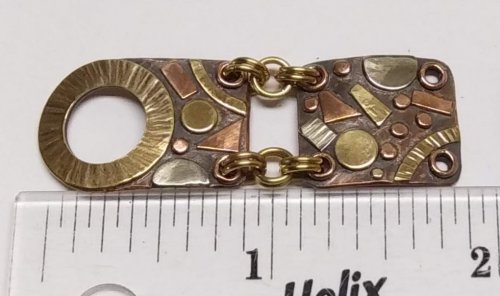 Mixed Metal Sampler Bracelets Series PUTTING IT ALL TOGETHER
Mixed Metal Sampler Bracelets Series PUTTING IT ALL TOGETHER  Mixed Metal Sampler Bracelet 7 - Steampunk Space Oddity
Mixed Metal Sampler Bracelet 7 - Steampunk Space Oddity Mixed Metal Sampler Bracelet 8 - Fun Shapes
Mixed Metal Sampler Bracelet 8 - Fun Shapes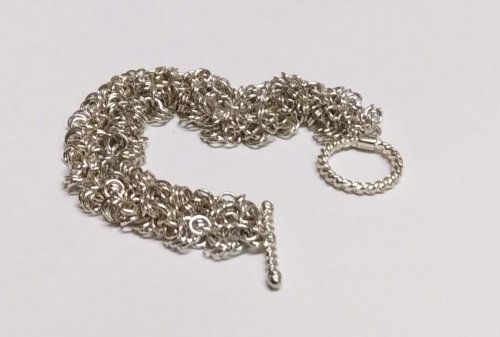 Jump Ring Fringe Bracelet
Jump Ring Fringe Bracelet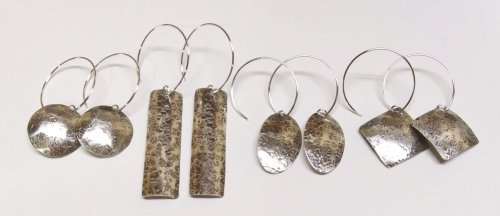 Easy Artisan Earrings
Easy Artisan Earrings Making Chain with Wubbers and Wire
Making Chain with Wubbers and Wire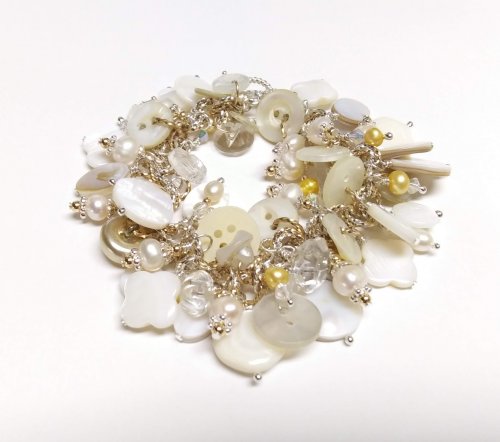 Heirloom Buttons and Beads Bracelet
Heirloom Buttons and Beads Bracelet  Tiny Silver Charms part 1
Tiny Silver Charms part 1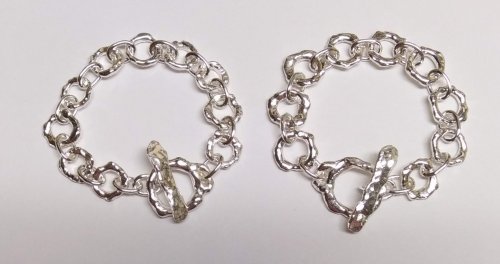 Argentium Silver Scrap Chain
Argentium Silver Scrap Chain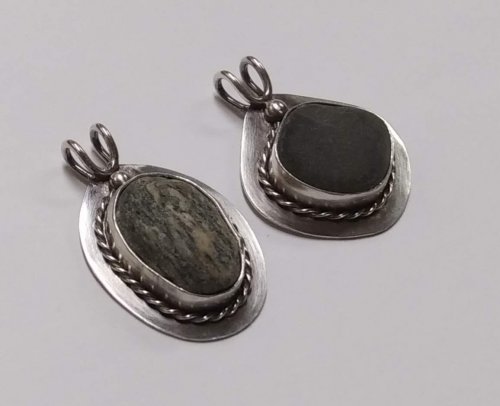 Sterling Lake Stone Pendant with Twisted Wire
Sterling Lake Stone Pendant with Twisted Wire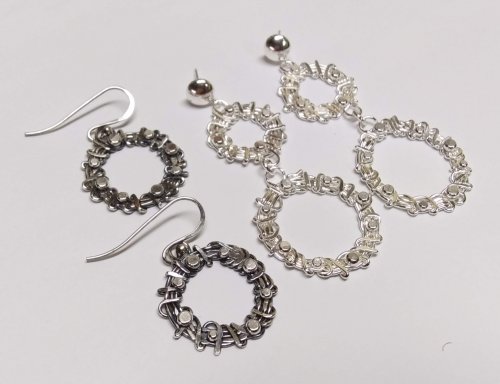 Smashing Drop Earrings
Smashing Drop Earrings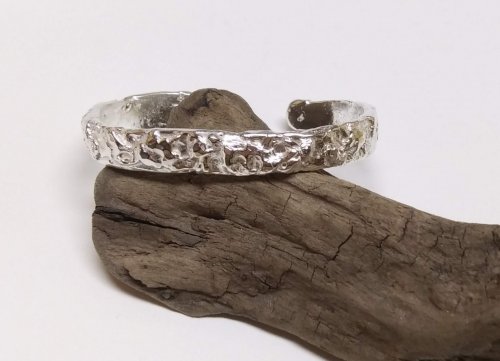 Argentium Silver Scrap Nugget Cuff
Argentium Silver Scrap Nugget Cuff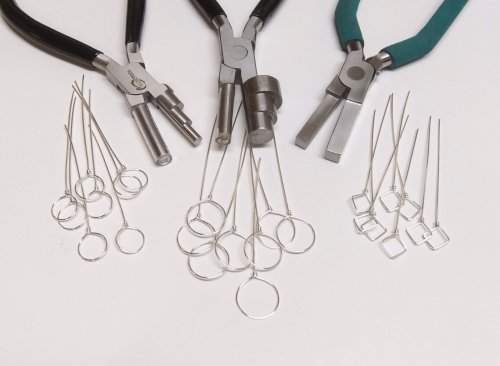 Finish Them Your Way Earrings
Finish Them Your Way Earrings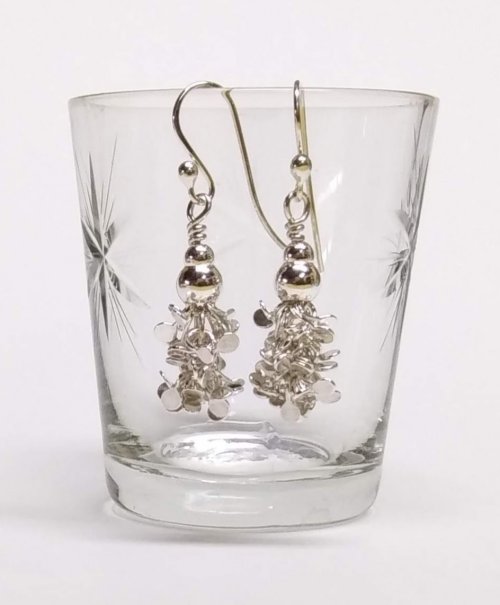 Paddle Fringe Earrings
Paddle Fringe Earrings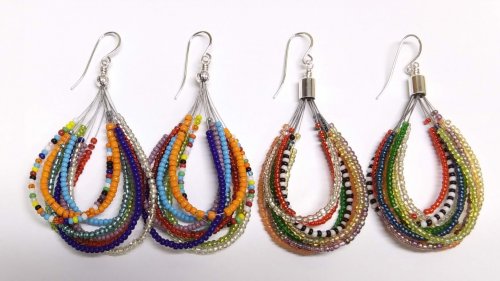 Seed Bead Earrings
Seed Bead Earrings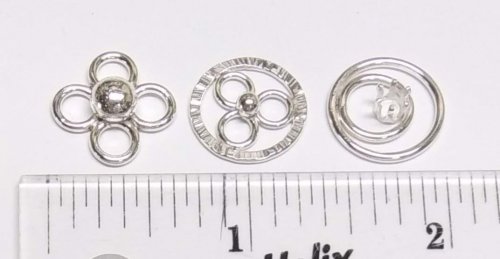 Bracelet Links 1, 2,3
Bracelet Links 1, 2,3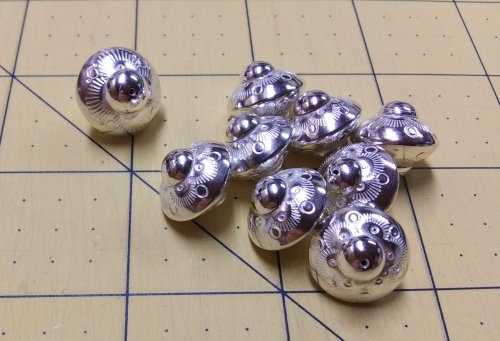 Stamped Saucer Beads
Stamped Saucer Beads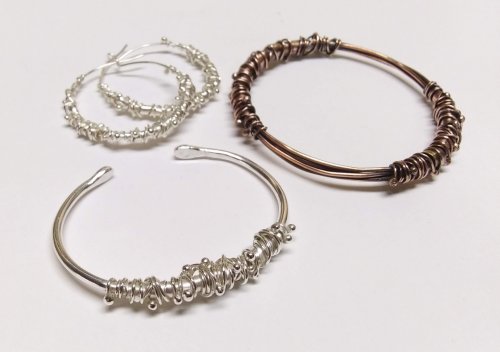 Chaos Scrap Wrap Jewelry
Chaos Scrap Wrap Jewelry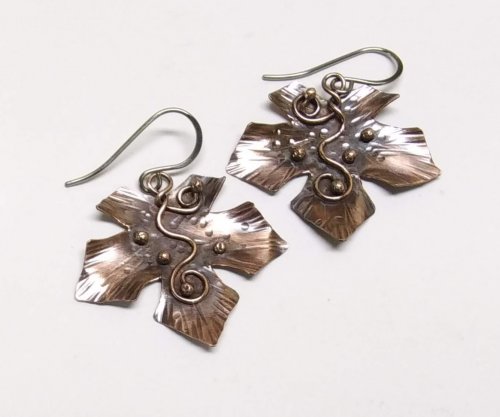 Maple Leaf Earrings
Maple Leaf Earrings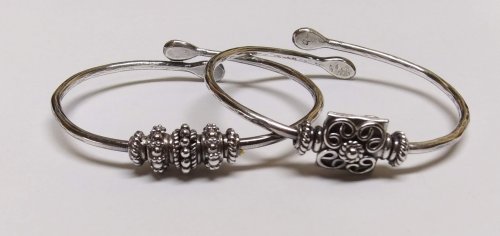 Child's Bracelet That Grows with Them
Child's Bracelet That Grows with Them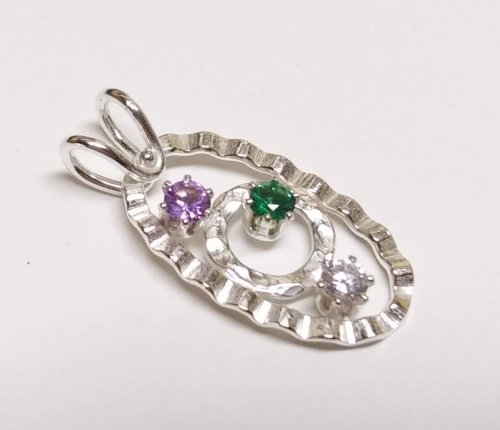 Mike's Surpirise Claire's Ripple Pendant
Mike's Surpirise Claire's Ripple Pendant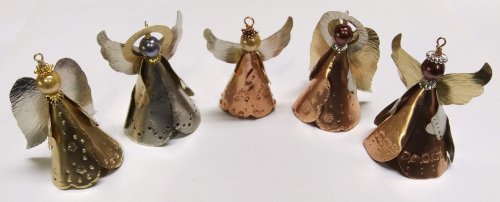 Angel Ornament
Angel Ornament 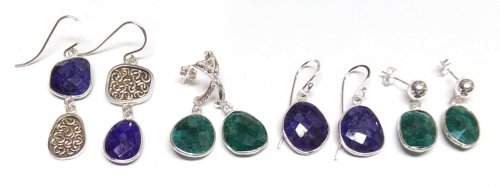 Diamonds, Emeralds, and Sapphires, Oh My.
Diamonds, Emeralds, and Sapphires, Oh My. 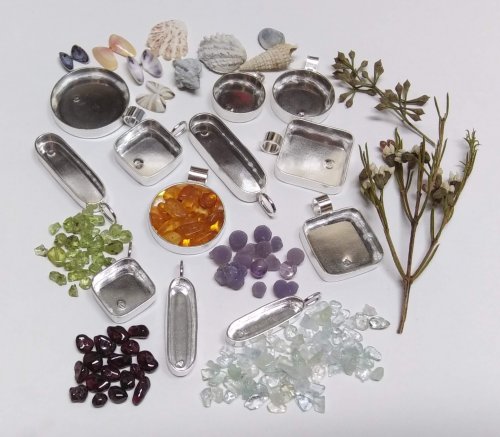 Treasure Bezel Cups
Treasure Bezel Cups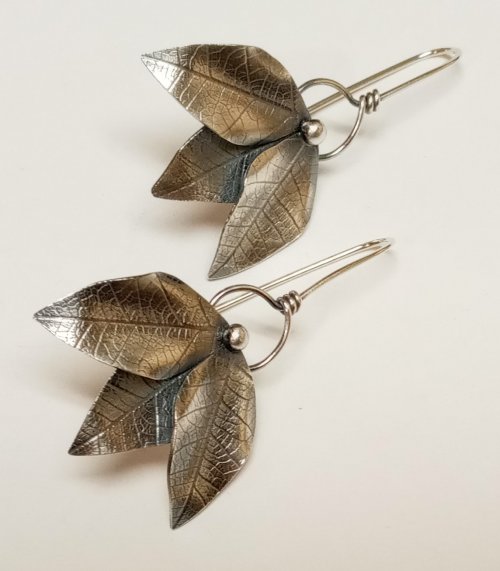 Three Leaves Earrings
Three Leaves Earrings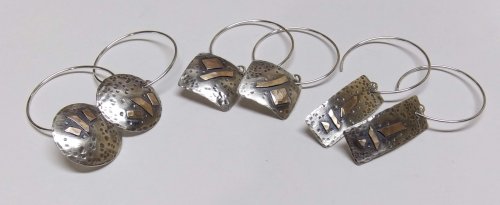 Silver and Gold Earrings
Silver and Gold Earrings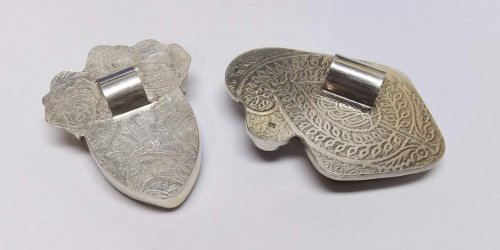 Make a Hidden Bail
Make a Hidden Bail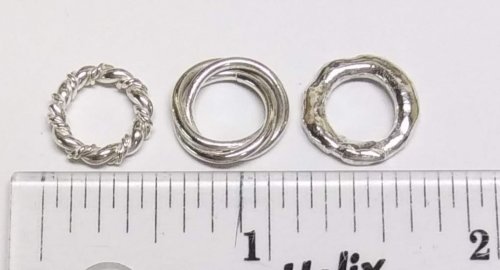 Wire Links 4, 5, 6
Wire Links 4, 5, 6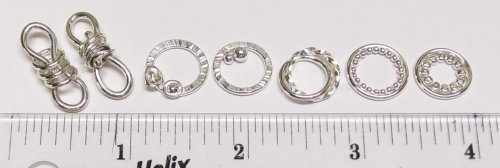 Wire Links 7, 8, 9, and 10
Wire Links 7, 8, 9, and 10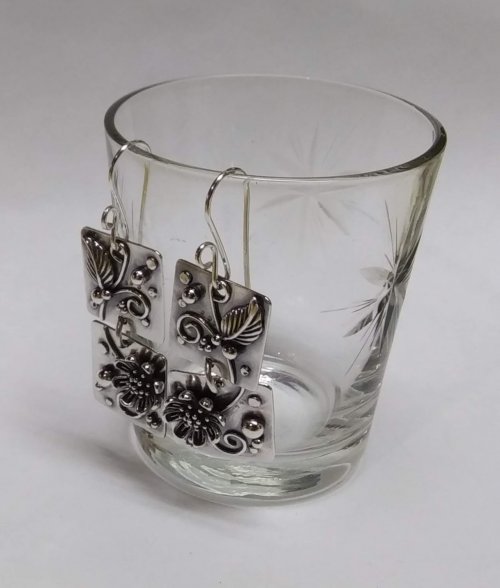 Double Loop Ear Wires
Double Loop Ear Wires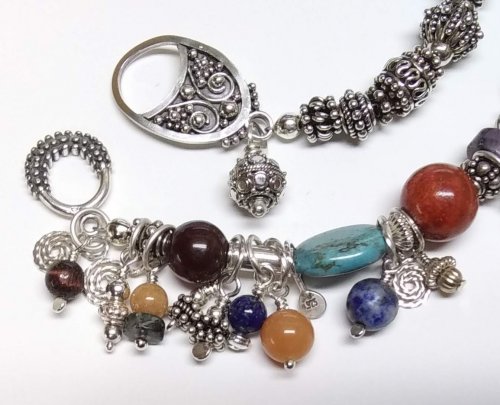 Balled and Paddled Head Pins
Balled and Paddled Head Pins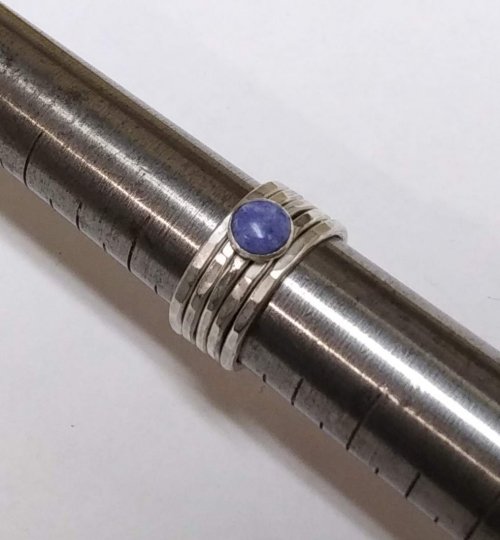 Textured Stacked Rings
Textured Stacked Rings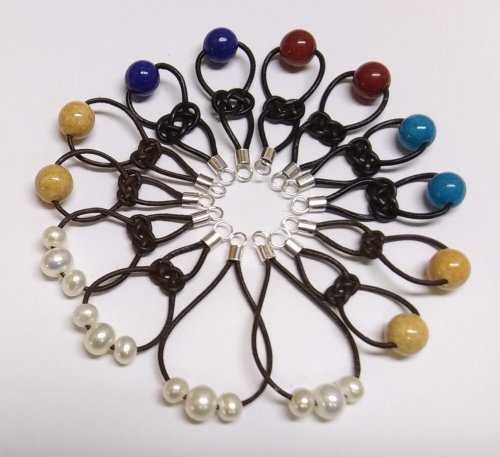 Cord and Bead Earrings
Cord and Bead Earrings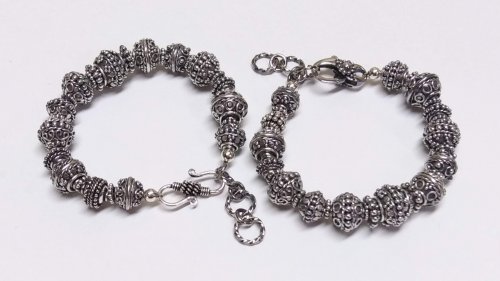 Bali Style Adjustable Closures
Bali Style Adjustable Closures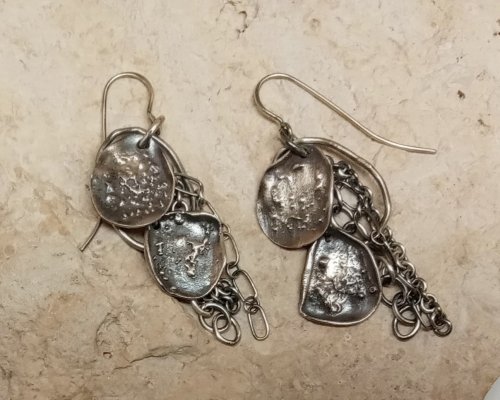 Organic Fused Silver Dust Earrings
Organic Fused Silver Dust Earrings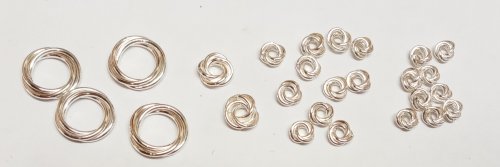 Mobius Rings
Mobius Rings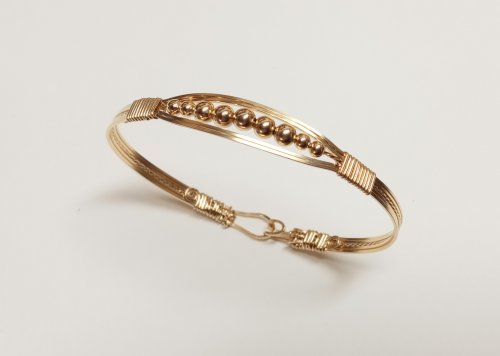 Dainty Bead and Wire Bangle with Hook Closure
Dainty Bead and Wire Bangle with Hook Closure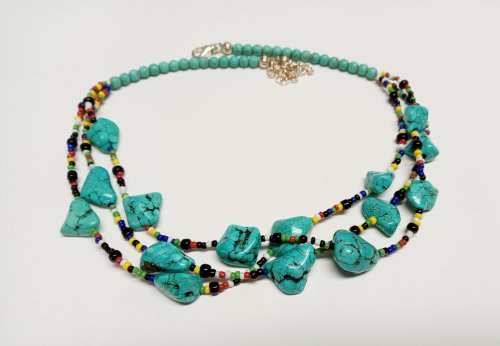 Seed Bead and Nugget Necklace
Seed Bead and Nugget Necklace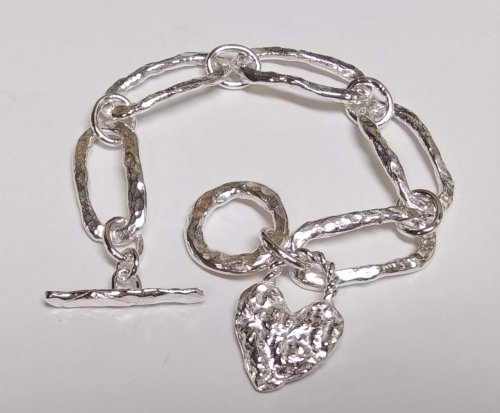 Love Locks Heart Charm
Love Locks Heart Charm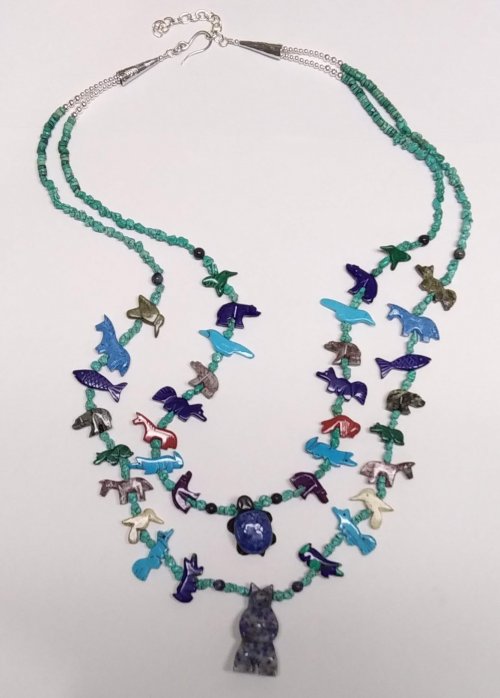 Traditional Southwest Style Hook Closures
Traditional Southwest Style Hook Closures 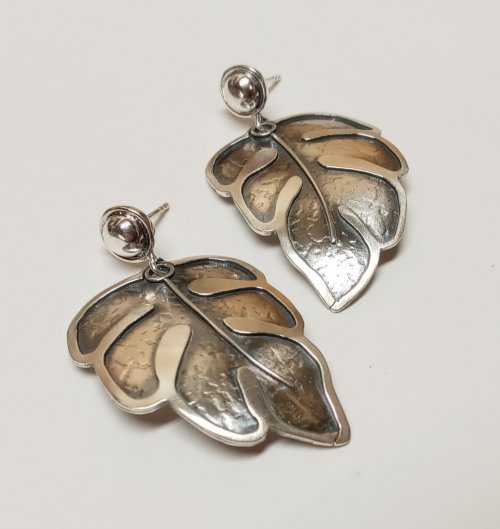 Negative Space Earrings
Negative Space Earrings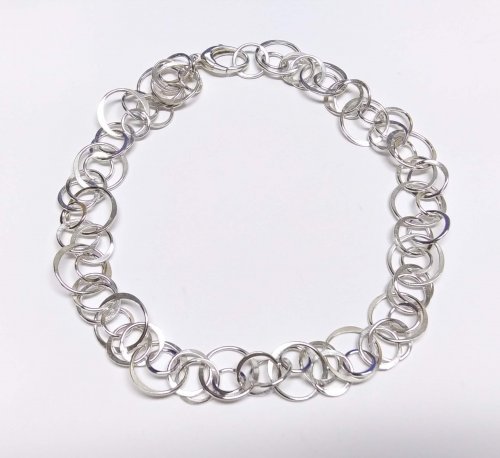 Jumbled Lacy Chain
Jumbled Lacy Chain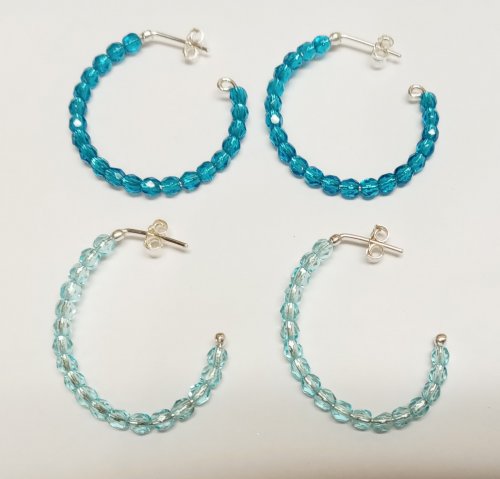 Easy Beaded Post Hoop Earrings
Easy Beaded Post Hoop Earrings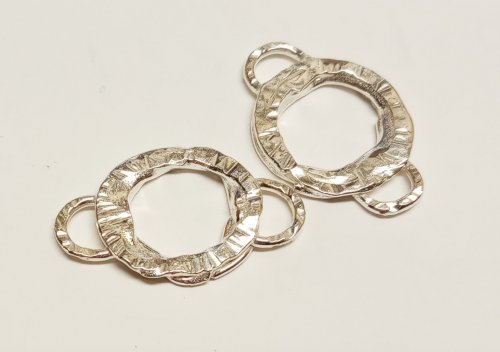 Rustic Silver Links
Rustic Silver Links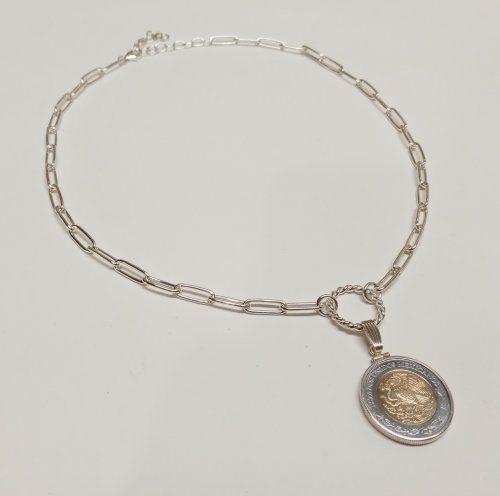 Make a Soldered Paperclip Chain
Make a Soldered Paperclip Chain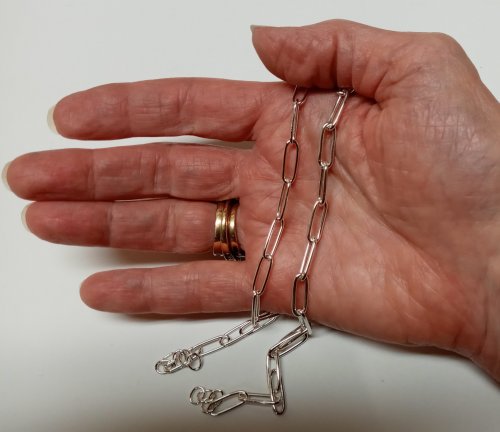 Make a Fused Paperclip Chain
Make a Fused Paperclip Chain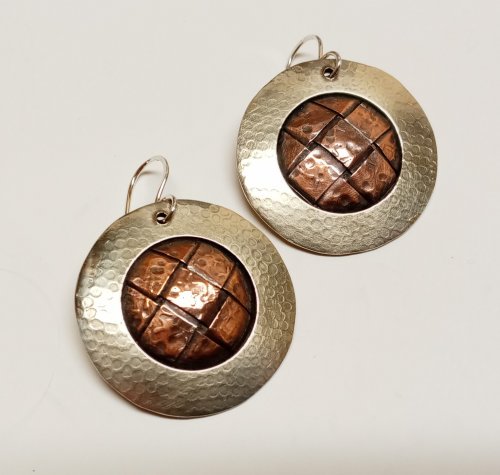 Make Woven Metal Strips to Use in Your Designs
Make Woven Metal Strips to Use in Your Designs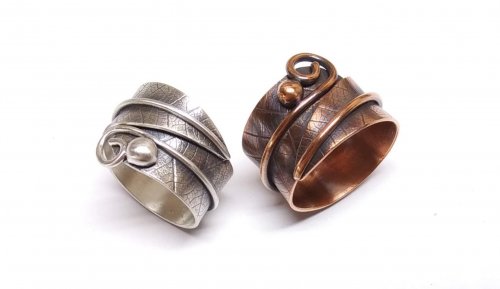 Leaf Wrap Metal Rings version 1
Leaf Wrap Metal Rings version 1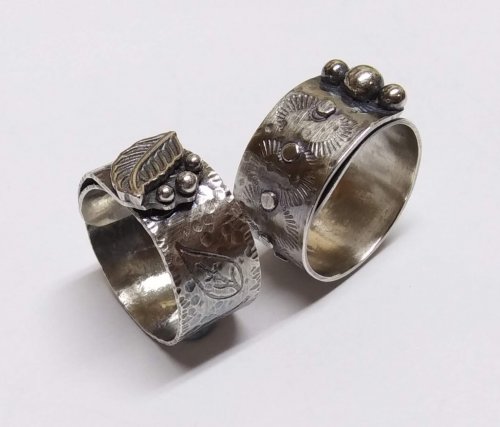 Leaf Wrap Metal Rings version 2
Leaf Wrap Metal Rings version 2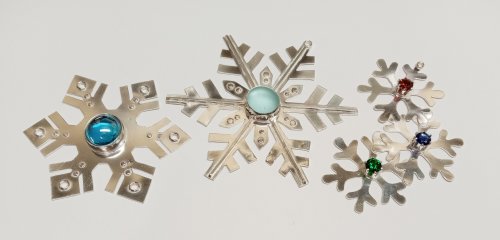 Snowflake Ornaments
Snowflake Ornaments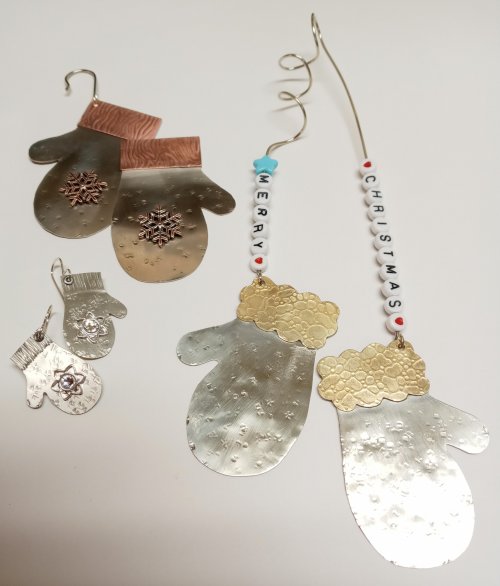 Mitten Ornament
Mitten Ornament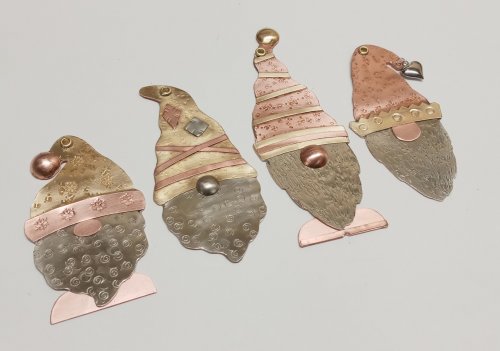 Gnome Ornaments
Gnome Ornaments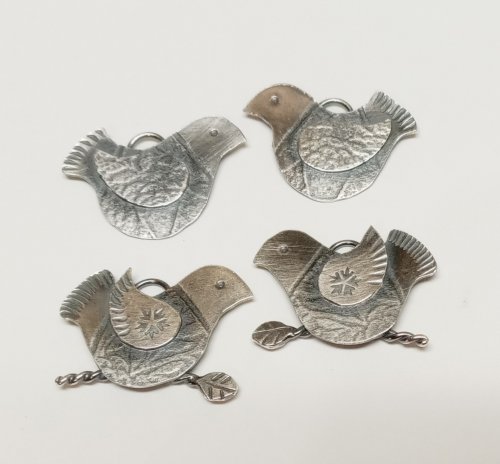 A Partridge in a Pear Tree Earrings
A Partridge in a Pear Tree Earrings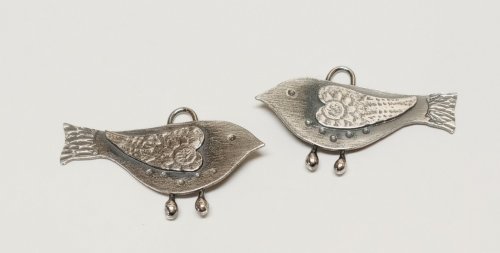 Two Turtle Doves Earrings
Two Turtle Doves Earrings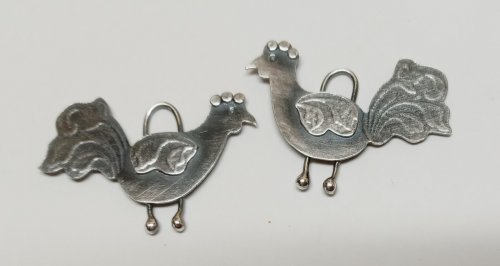 Three French Hens Earrings
Three French Hens Earrings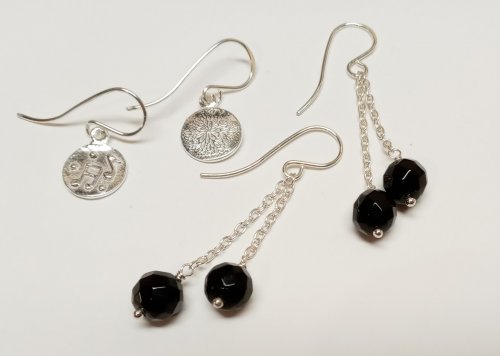 Four Calling Birds Earrings
Four Calling Birds Earrings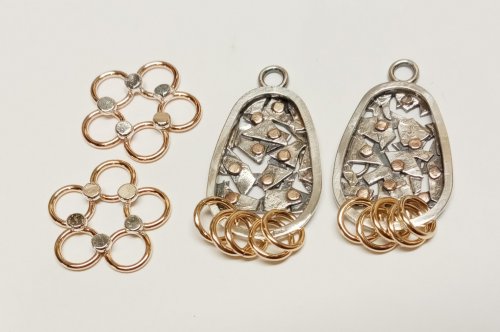 Five Golden Rings Earrings
Five Golden Rings Earrings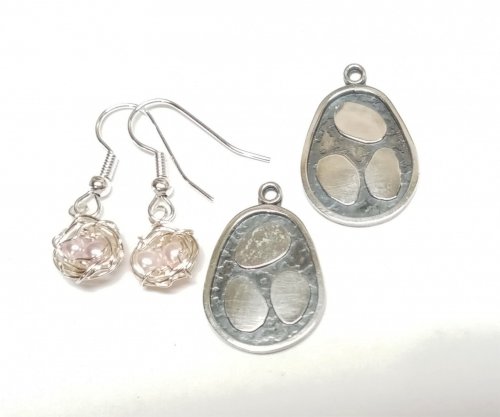 Six Geese a Layin' Earrings
Six Geese a Layin' Earrings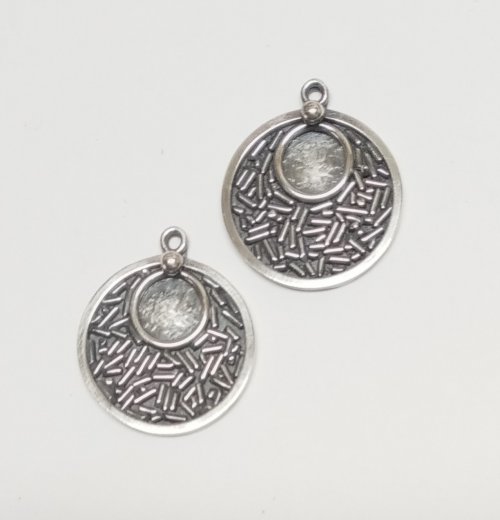 Seven Swans a Swimming Earrings
Seven Swans a Swimming Earrings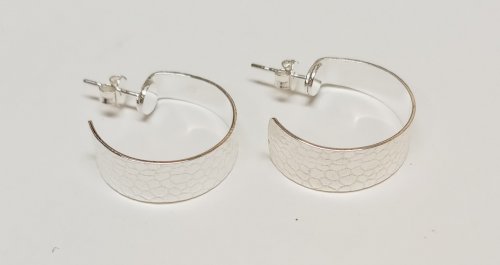 Eight Maids a Milking earrings
Eight Maids a Milking earrings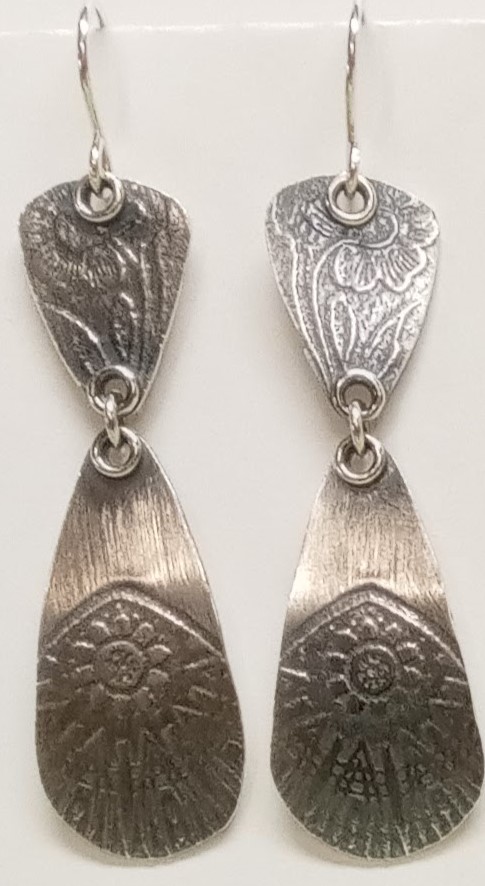 Nine Ladies Dancing Earrings
Nine Ladies Dancing Earrings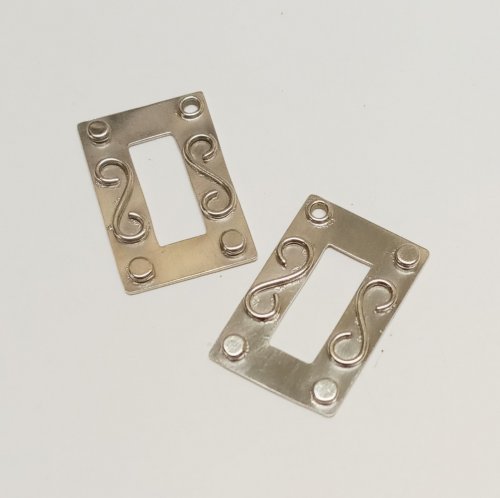 Ten Lords a Leaping Earrings
Ten Lords a Leaping Earrings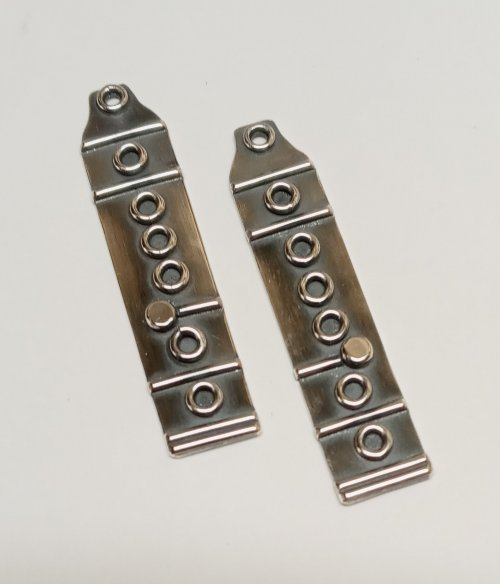 Eleven Pipers Piping Earrings
Eleven Pipers Piping Earrings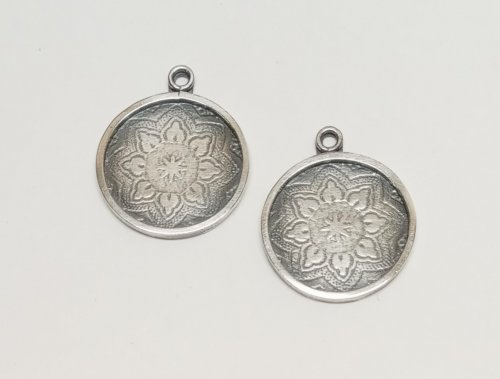 Twelve Drummers Drumming Earrings
Twelve Drummers Drumming Earrings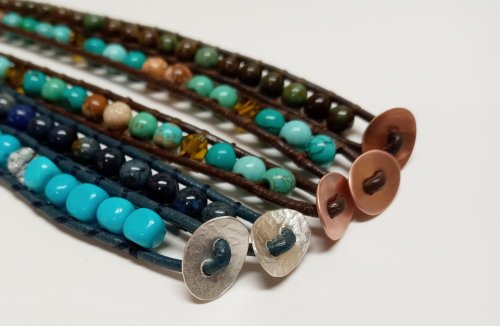 Make Your Own Bracelet Button Clasps
Make Your Own Bracelet Button Clasps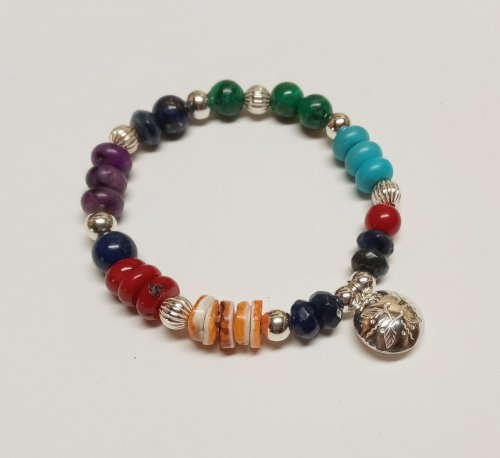 Little Saucer Bells
Little Saucer Bells Doodads - Fun Findings
Doodads - Fun Findings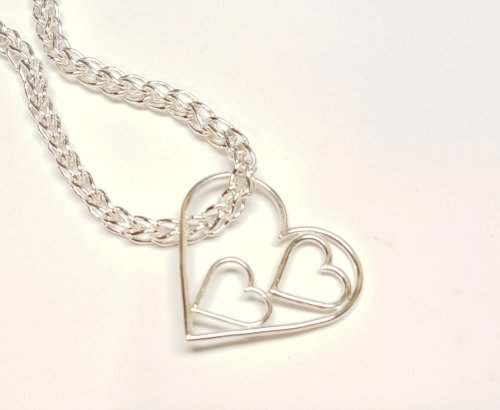 No Measure Hearts, Any Size, Any Gauge
No Measure Hearts, Any Size, Any Gauge 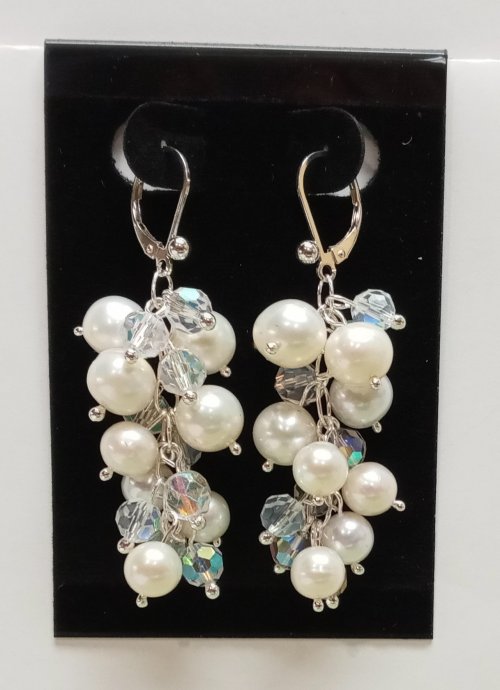 Cascading Drops Earrings
Cascading Drops Earrings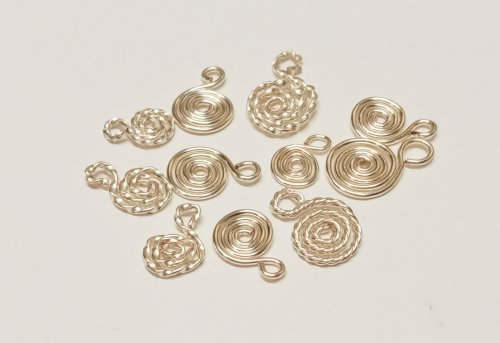 WIre Basics - Spiral Charms
WIre Basics - Spiral Charms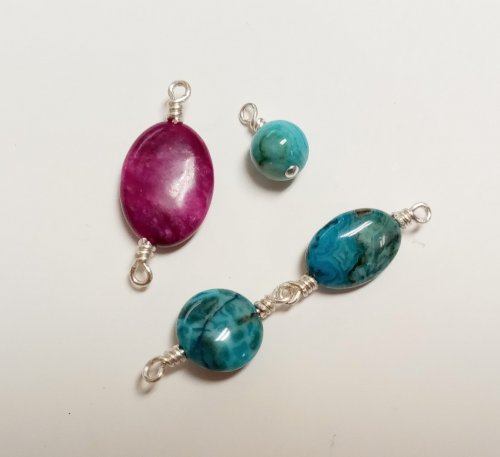 Wire Basics - Wrapped Loops and Links
Wire Basics - Wrapped Loops and Links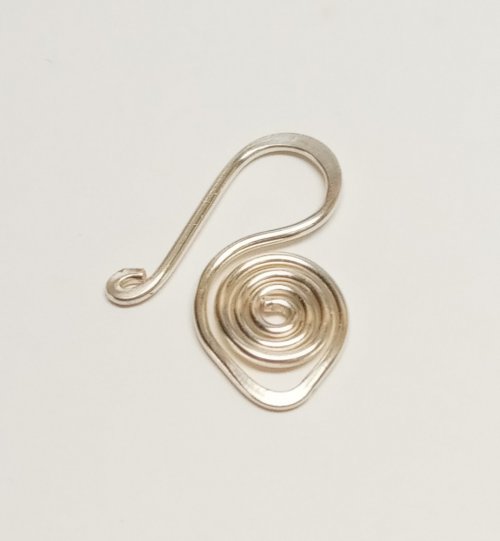 Wire Basics - Simple Swan Hook
Wire Basics - Simple Swan Hook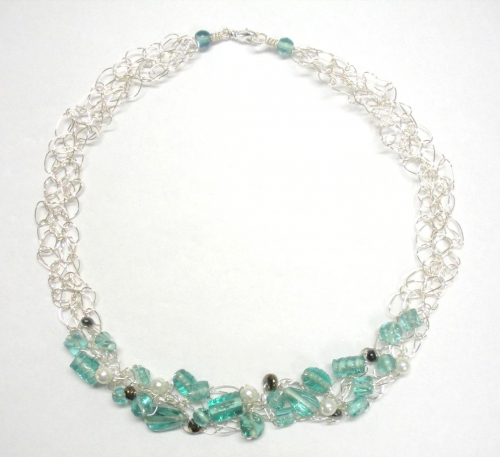 Wire Crocheted Necklace
Wire Crocheted Necklace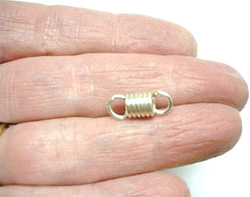 Wire Basics - Wire Garage Door Spring Link
Wire Basics - Wire Garage Door Spring Link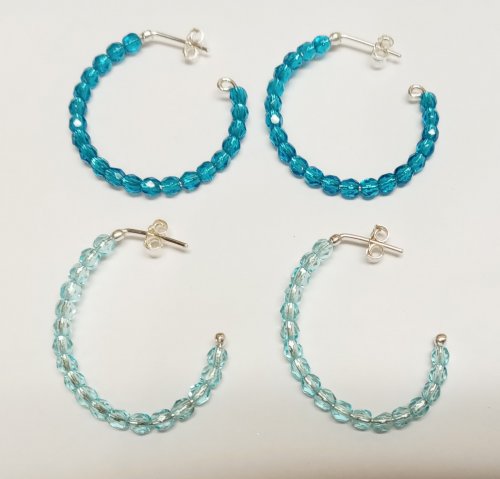 Easy Post Hoop Earrings
Easy Post Hoop Earrings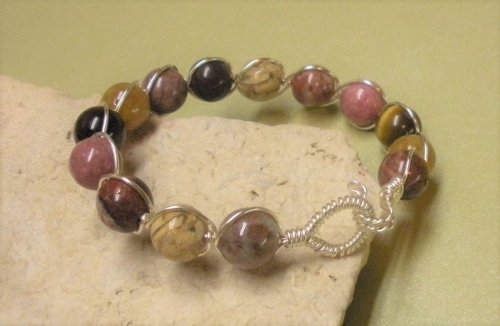 Double Wrap Wire Bangle Bracelet
Double Wrap Wire Bangle Bracelet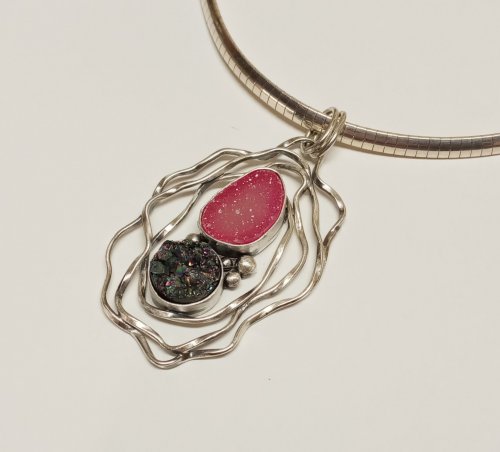 Organic Wire Pendant
Organic Wire Pendant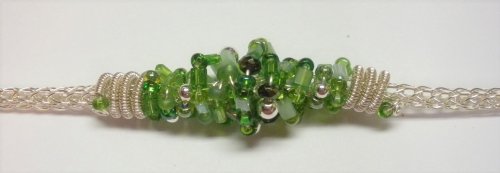 Coiled, Beaded Slide
Coiled, Beaded Slide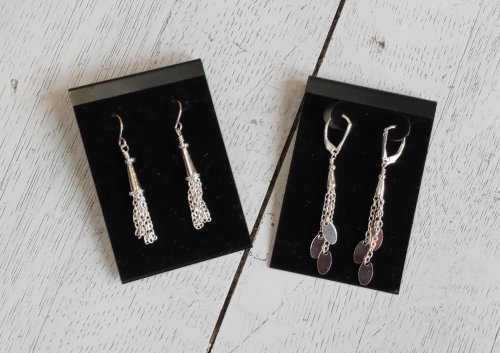 Cone and Chain Earrings
Cone and Chain Earrings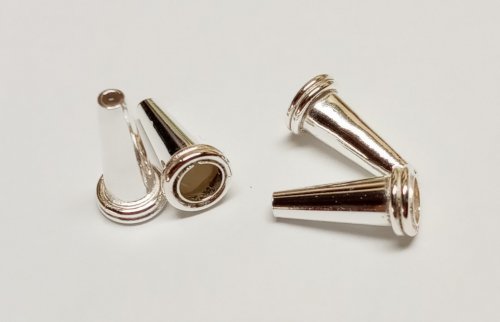 Embellished Sterling Cones
Embellished Sterling Cones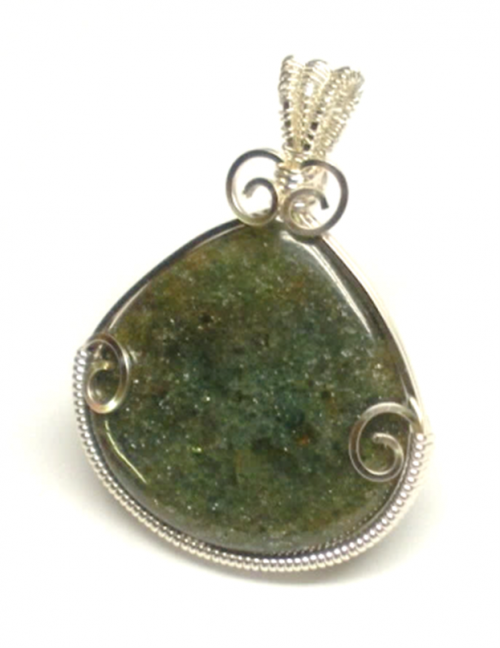 Classic Wire Wrap Bezelled Pendant
Classic Wire Wrap Bezelled Pendant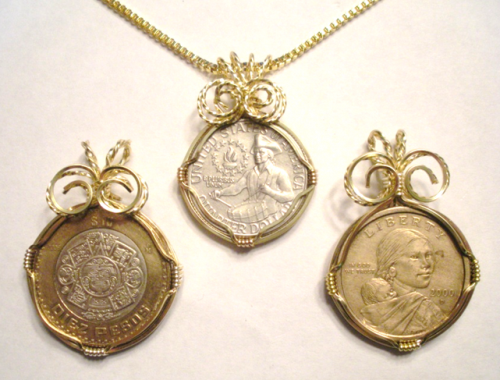 Wire Wrap a Coin
Wire Wrap a Coin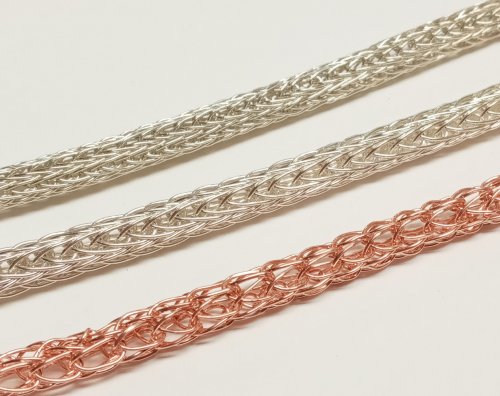 Viking Knit
Viking Knit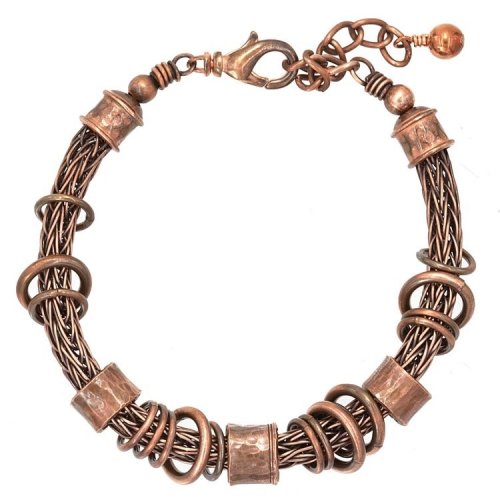 Viking Knit Bracelet
Viking Knit Bracelet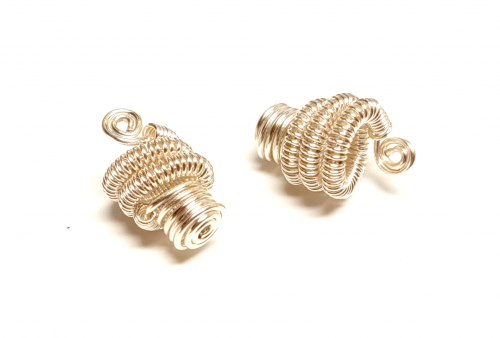 Coiled Wire End Caps
Coiled Wire End Caps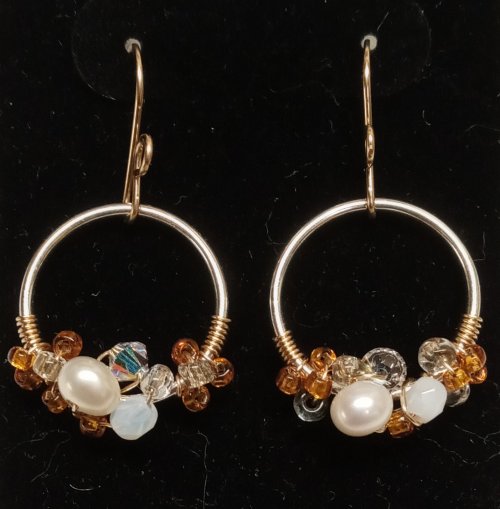 Bead-Wrapped Hoop Earrings
Bead-Wrapped Hoop Earrings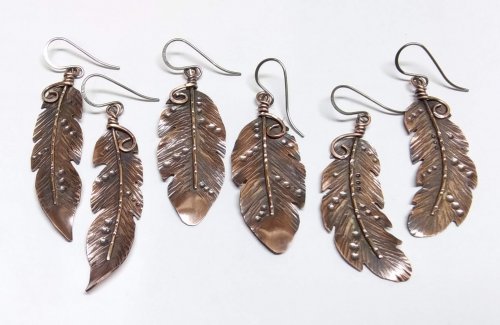 Copper Feather Earrings
Copper Feather Earrings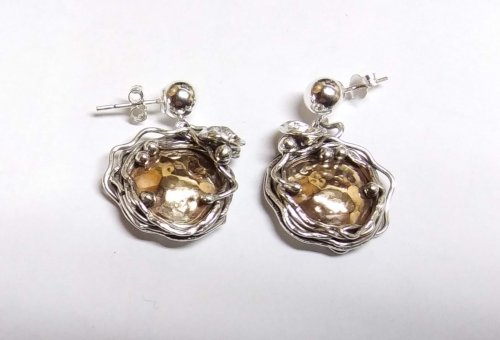 Soldering a Dome to a Backplate
Soldering a Dome to a Backplate 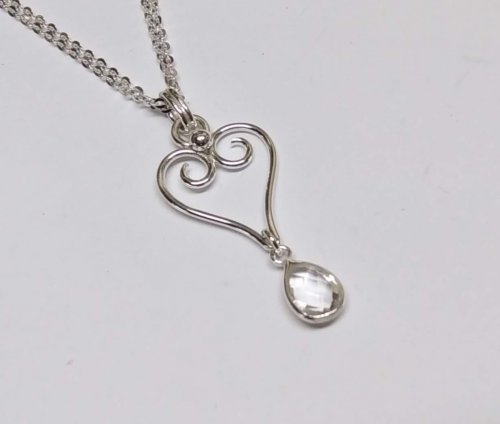 Wire Heart Pendant with Gemstone Drop
Wire Heart Pendant with Gemstone Drop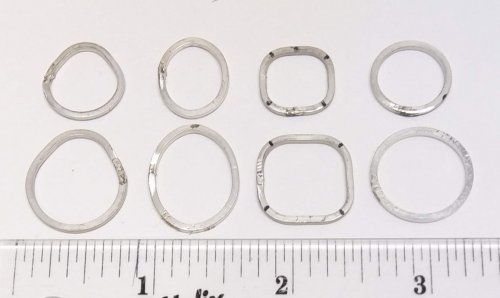 Make Basic Wire Shapes for Jewelry
Make Basic Wire Shapes for Jewelry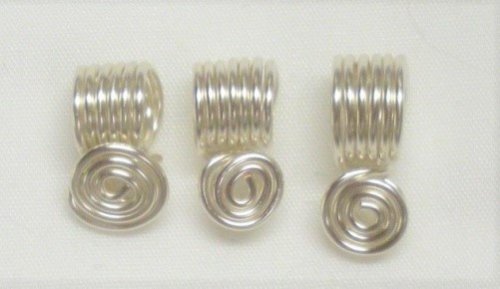 Make Simple Wire Slide Bails
Make Simple Wire Slide Bails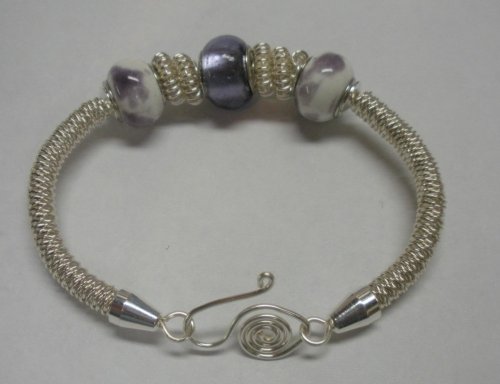 Coiled Bead and Twisted Wire Bracelet
Coiled Bead and Twisted Wire Bracelet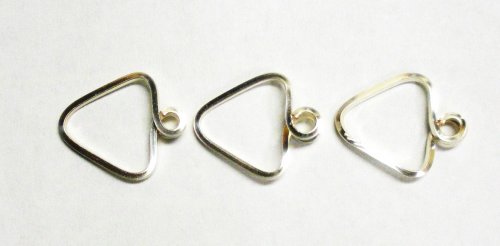 Wire Triangle Link
Wire Triangle Link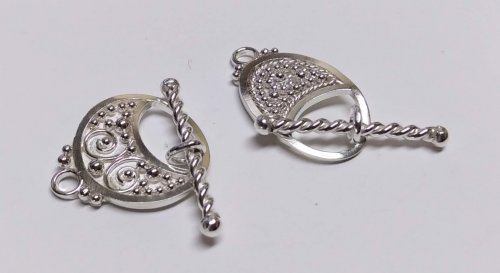 Bali Style Focal Toggle
Bali Style Focal Toggle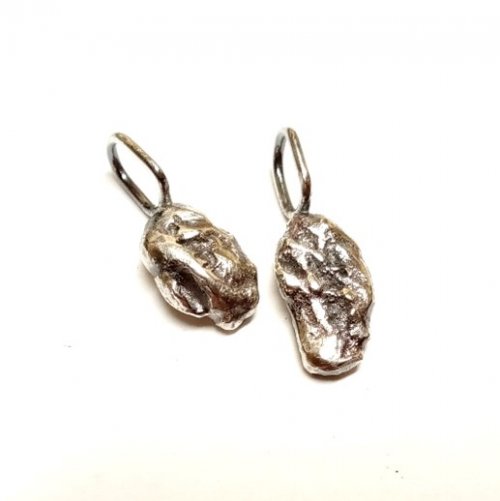 Silver Nuggets
Silver Nuggets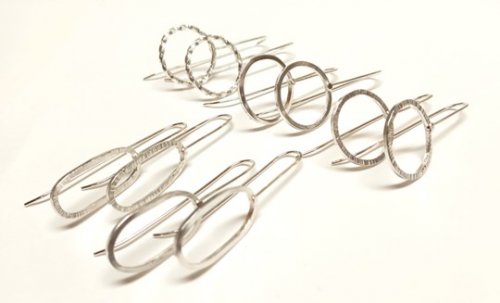 Fun Shapes Fish Hook Earrings
Fun Shapes Fish Hook Earrings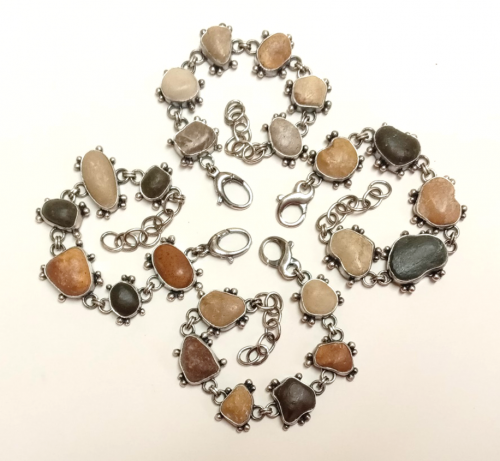 After the Rain Bracelets
After the Rain Bracelets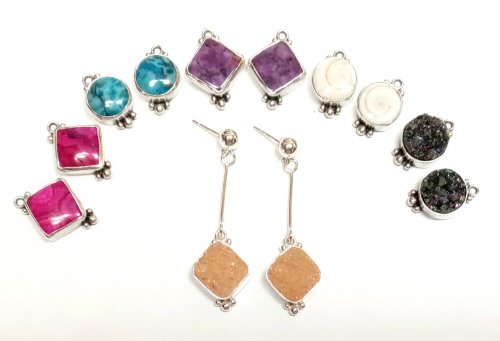 Dangling Drop Earrings
Dangling Drop Earrings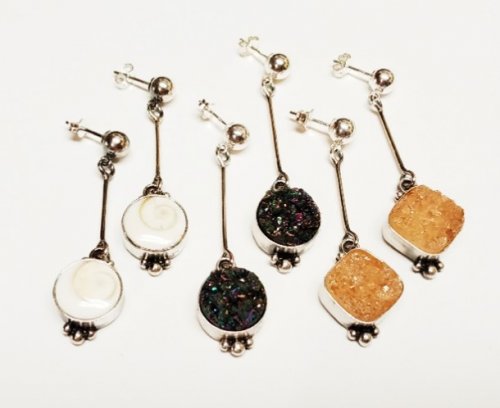 Dangling Chain Sticks
Dangling Chain Sticks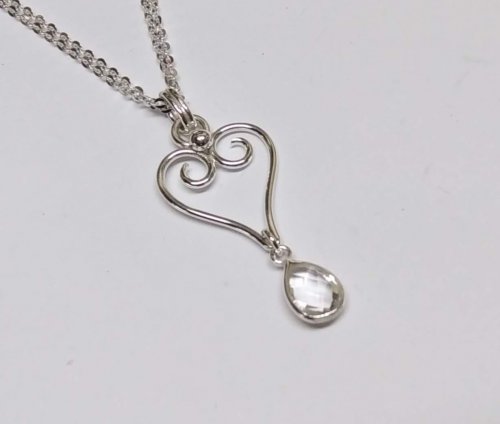 Wire Heart Pendant with Gemstone Drop
Wire Heart Pendant with Gemstone Drop 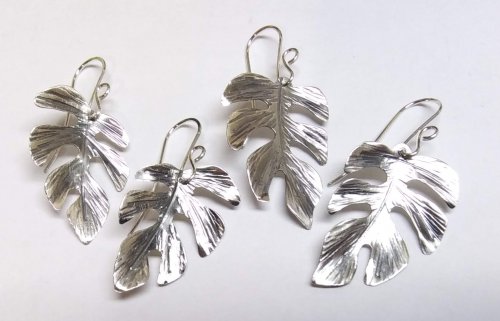 Tropical Leaf Earrings
Tropical Leaf Earrings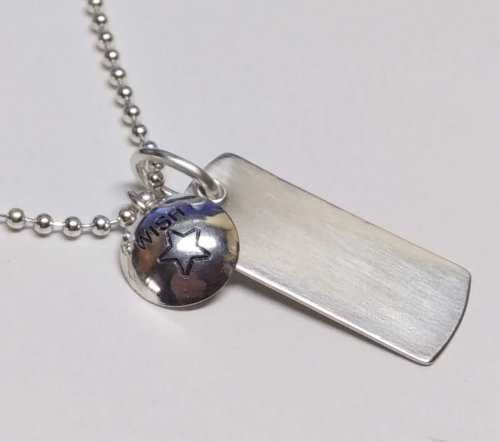 Dog Tag Style Necklace
Dog Tag Style Necklace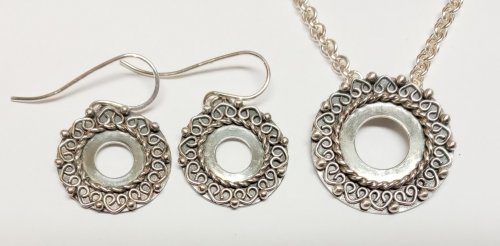 Lacy Washers
Lacy Washers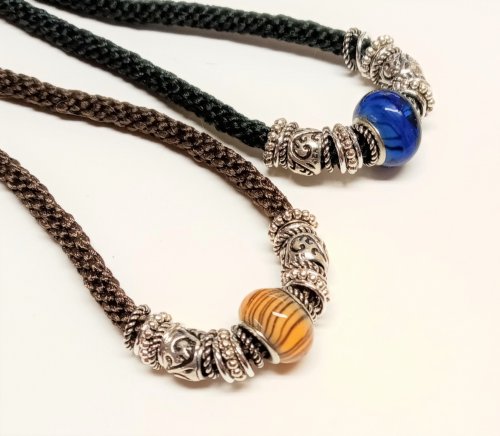 8-Strand Kumihimo
8-Strand Kumihimo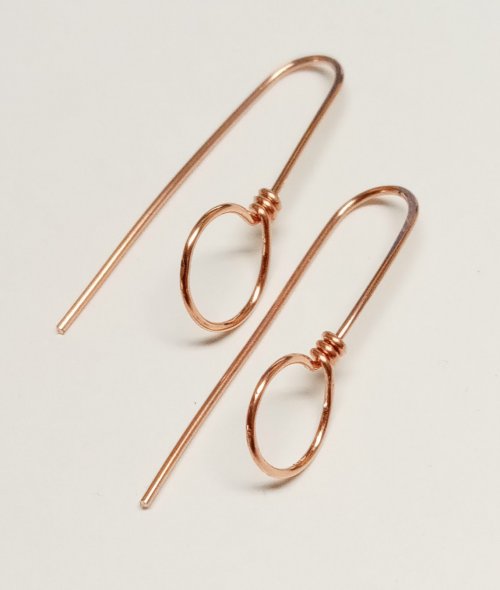 Closed Loop Ear Wires
Closed Loop Ear Wires Simple Strip Bails from Scratch
Simple Strip Bails from Scratch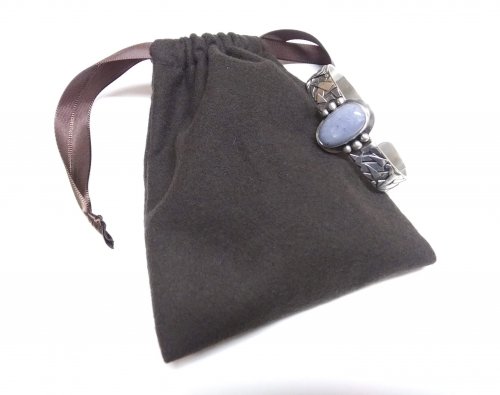 Anti-tarnish Silver Cloth Bags
Anti-tarnish Silver Cloth Bags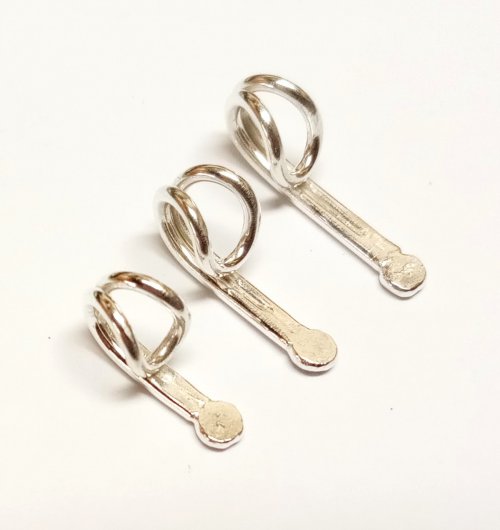 Cotter Pin Style Bail
Cotter Pin Style Bail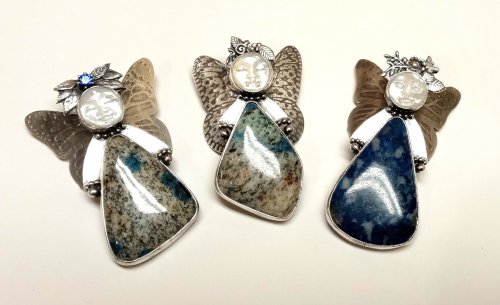 Holiday Woodland Fairy Ornament
Holiday Woodland Fairy Ornament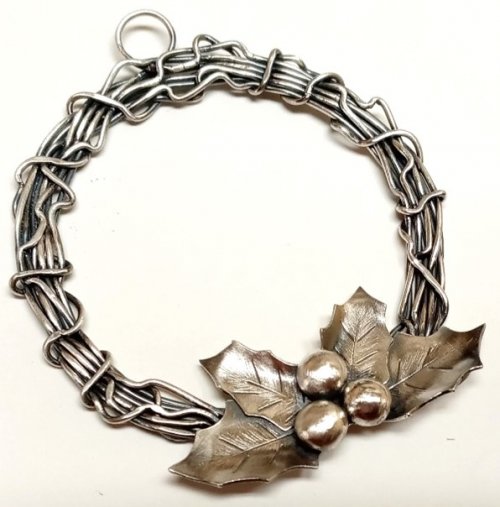 Happy Holly Days Wreath Ornament
Happy Holly Days Wreath Ornament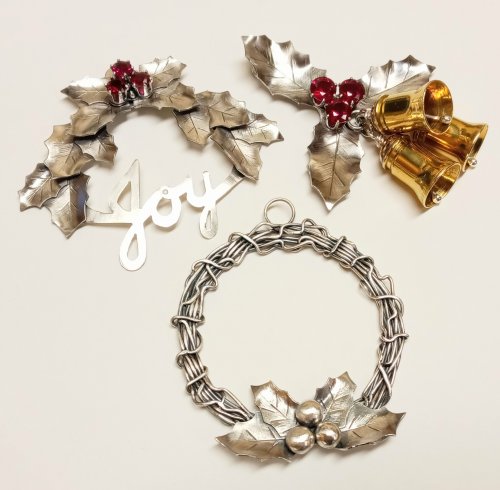 Happy Holly Days Leaves and Berries
Happy Holly Days Leaves and Berries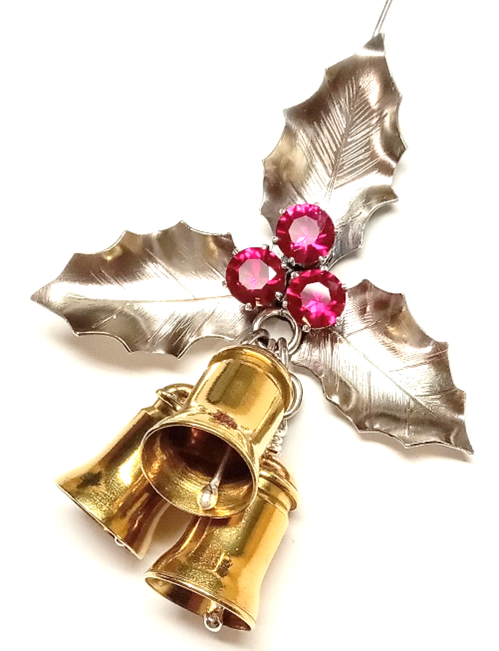 Happy Holly Days Bells Ornament
Happy Holly Days Bells Ornament 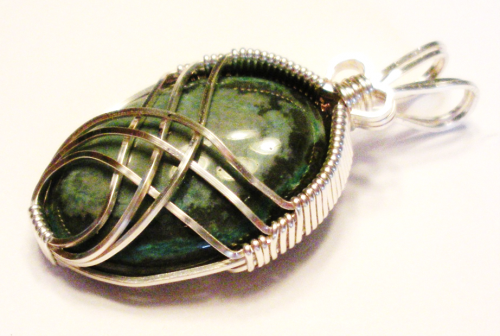 Art Deco Wire Wrapped Pendant
Art Deco Wire Wrapped Pendant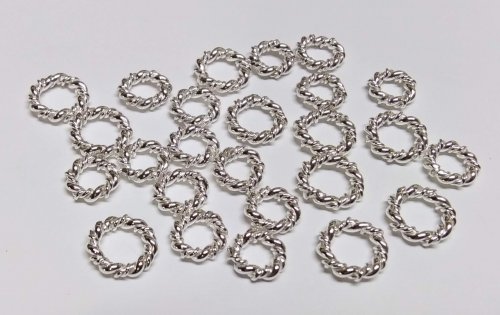 Twisted Wire Jump Rings
Twisted Wire Jump Rings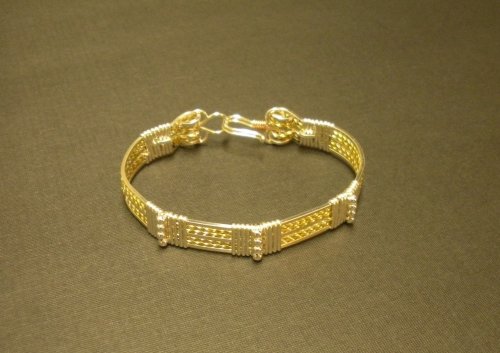 Two-tone Beaded Bangle
Two-tone Beaded Bangle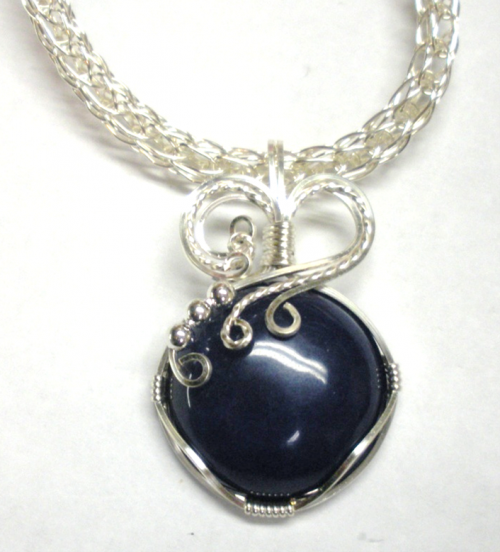 Sweetheart Pendant
Sweetheart Pendant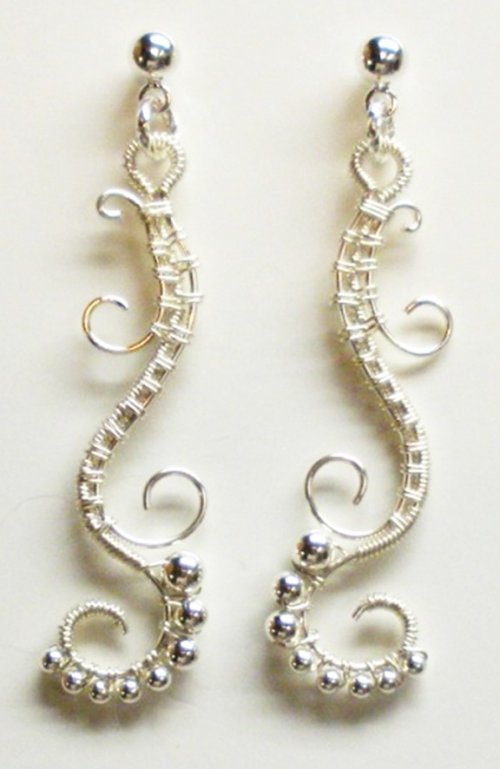 Waves on the Beach Earrings
Waves on the Beach Earrings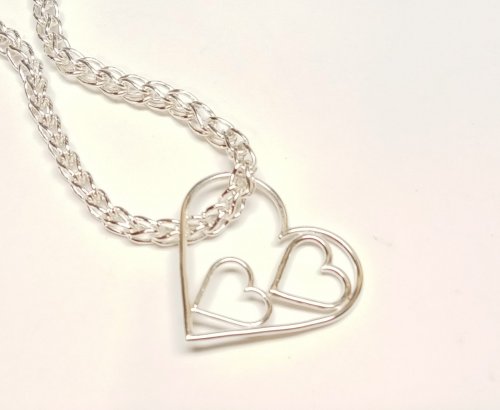 Any Size Wire Hearts - Any Size, Any Gauge
Any Size Wire Hearts - Any Size, Any Gauge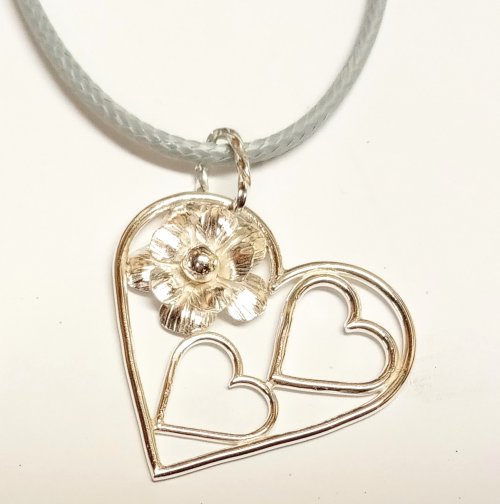 Just in Case Heart Pendant
Just in Case Heart Pendant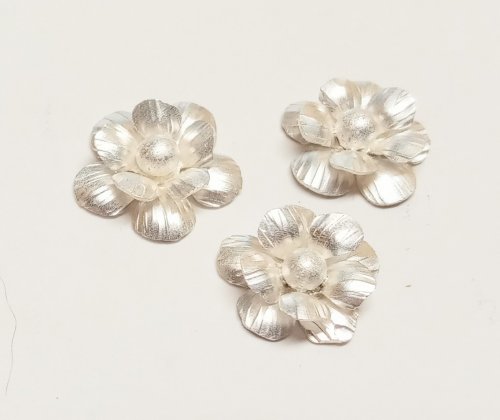 Small Flower Embellishment
Small Flower Embellishment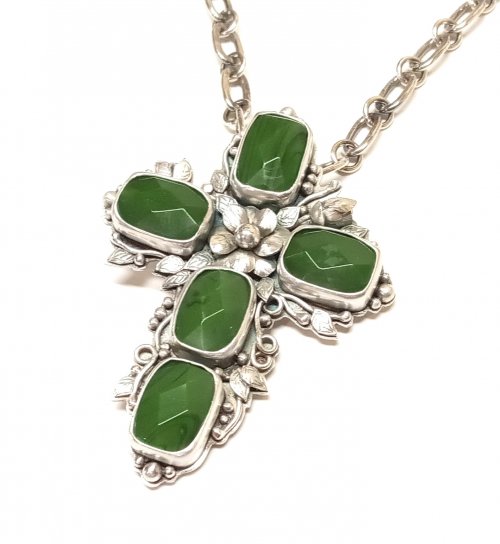 Making Tiny Dapped Metal Leaves
Making Tiny Dapped Metal Leaves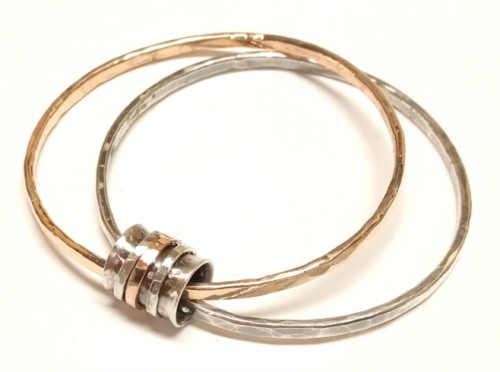 Spinner Fidget Bangles
Spinner Fidget Bangles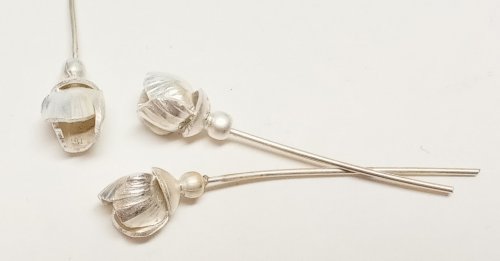 Small Flower Bud Embellishment
Small Flower Bud Embellishment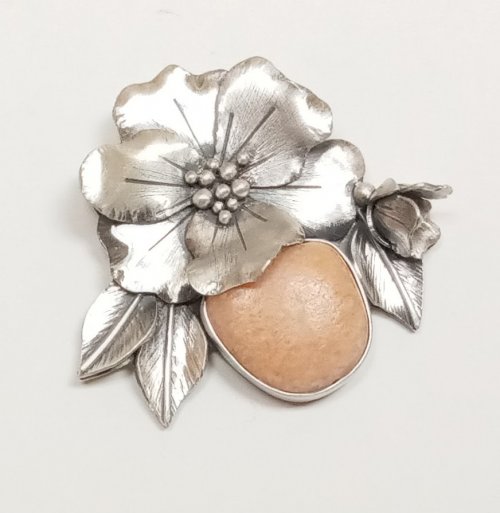 Three Petal Bud and Layered Embellishment
Three Petal Bud and Layered Embellishment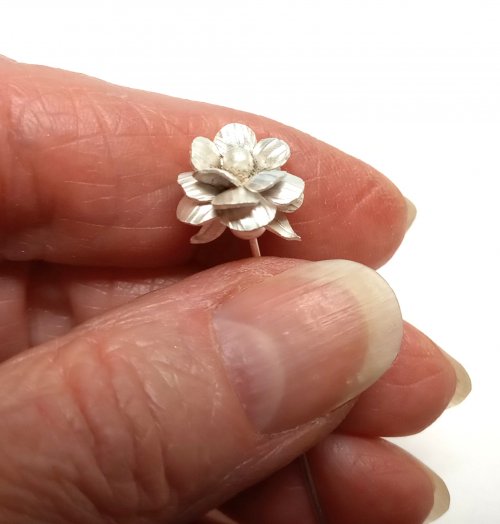 Creating a Flower Stem
Creating a Flower Stem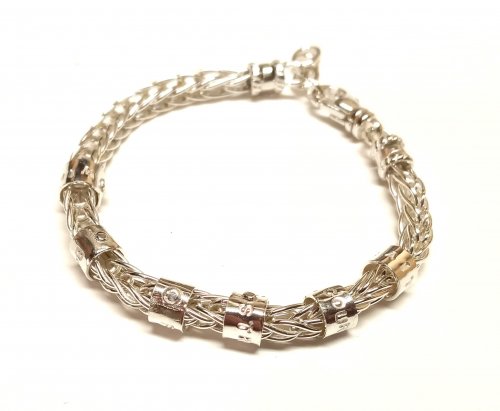 Stamped Tube Beads
Stamped Tube Beads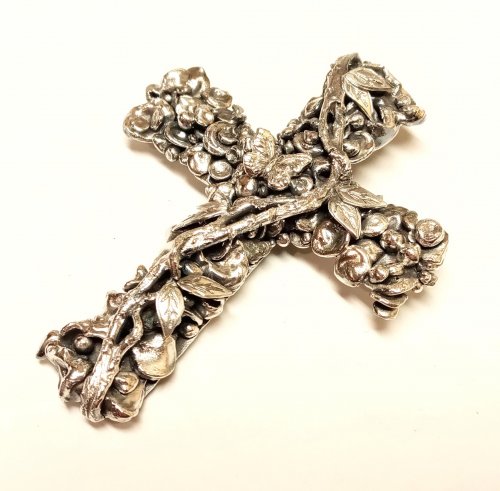 Water Cast Scrap Cross
Water Cast Scrap Cross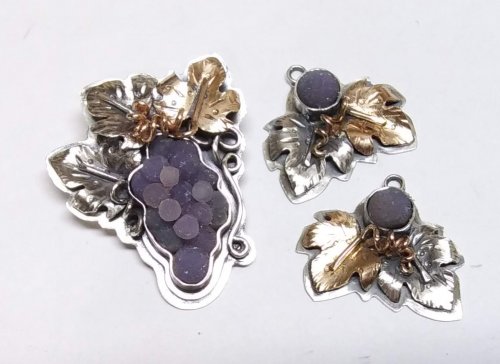 Sugared Grapes Pendant
Sugared Grapes Pendant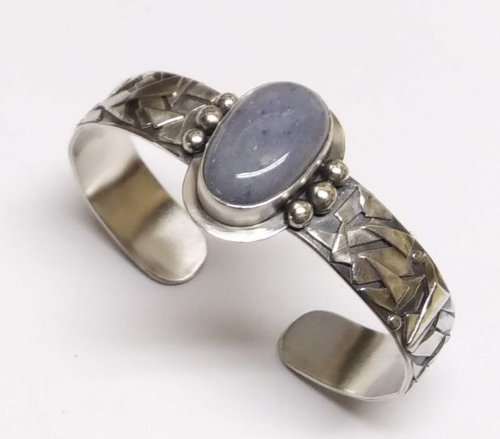 Tourist Rock Cuff Bracelet
Tourist Rock Cuff Bracelet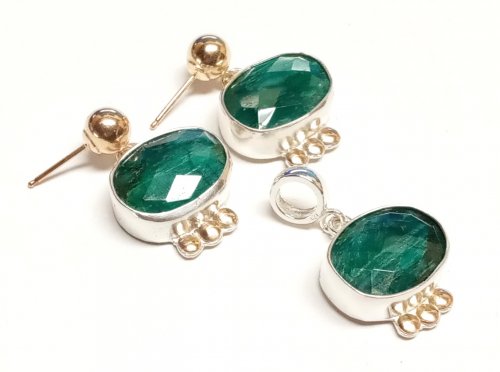 Gemstone Chains Reimagined
Gemstone Chains Reimagined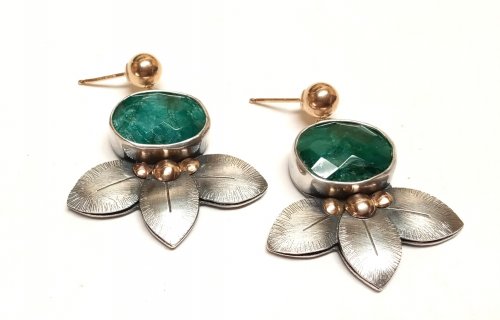 Checkerboard Faceted Earrings
Checkerboard Faceted Earrings Foxtail Chain aka Loop-in-Loop
Foxtail Chain aka Loop-in-Loop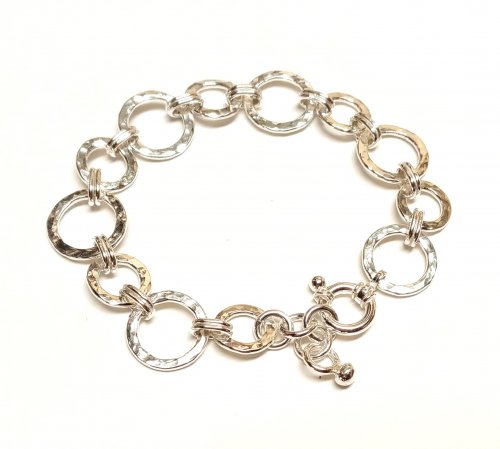 Handmade Chunky Chain
Handmade Chunky Chain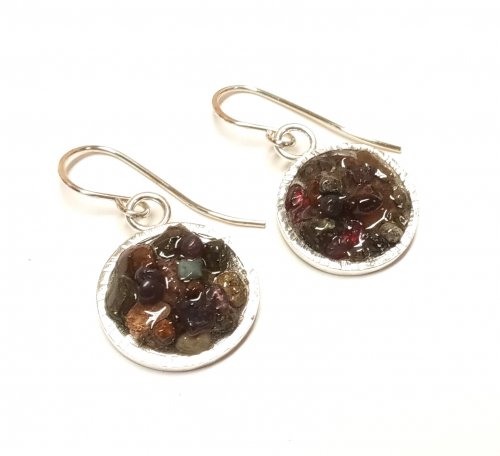 Capture a Summer Memory
Capture a Summer Memory Stone Key Fob
Stone Key Fob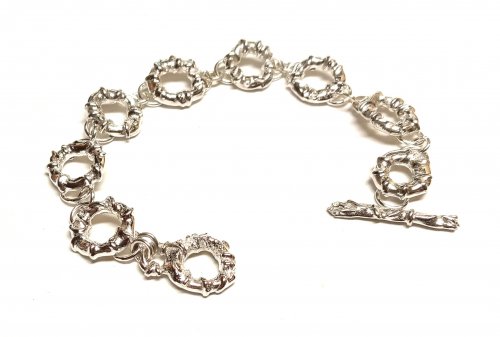 Sprinkles Link
Sprinkles Link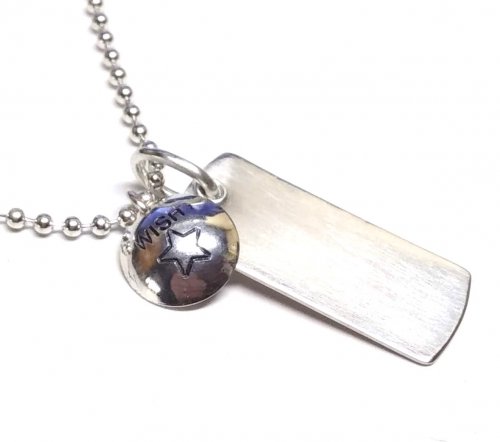 Ball Chain Embellishments
Ball Chain Embellishments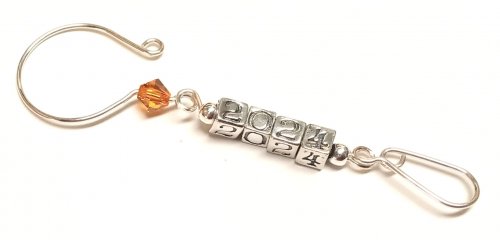 Handmade Ornament Hooks
Handmade Ornament Hooks
